FedResilience: A Federated Classification System to Ensure Critical LTE Communications During Natural Disasters
Abstract
1. Introduction
2. Background
2.1. Communication Network Coverage
2.2. Federated Learning
2.3. Natural Disasters
3. Related Work
4. Materials and Methods
4.1. Dataset
- Timestamp.
- Temperature (°C).
- Pressure hPa (hectopascales).
- Direct Current Idc (A).
- Continuous Voltage Vdc (V).
- Alternating RMS voltage. Vac (V).
- Provider.
- Technology LTE.
- RSRQ: The quality of the received signal was measured in dB.
- Network Coverage, Class: good (>−90 dBm), fair (−90 to −109 dBm) or poor (<−109 dBm), where 0 indicates a poor signal, 1 indicates a good, and 2 indicates a fair.
Exploratory Data Analysis (EDA)
4.2. Process Data
4.3. Sync Data
4.4. Feature Data
4.5. Split Data
4.6. Train and Test
4.7. Evaluate
4.8. Reports
4.9. Base Model Refinement
- 1.
- Under normal operating conditions, a dense feedforward neural network model (fully connected) was used to perform binary classification between the good (Class 1) and fair (Class 2) categories.
- 2.
- For disaster conditions, the same architecture was used, but it also included Class 0 (poor), resulting in a multiclass classification.
- Input: 60 neurons.
- First hidden layer: Dense (80 neurons) + Dropout (0.3).
- Second hidden: Dense (32 neurons) + Dropout (0.2).
- Third hidden layer: Dense (16 neurons) + Dropout (0.1).
- Output: Dense (2 neurons, binary classification or 3 neurons, multiclass classification.)
- L1 + L2 regularization enabled on dense layers.
- Dropout on each hidden layer (0.3, 0.2, 0.1 respectively).
- Learning rate: 0.0002.
- Gradient clipping: 0.5.
4.10. System Adherence Metric
4.10.1. Mathematical Formulation
- : Individual sample adherence (expressed as a percentage)
- : Predicted class for sample i by the FL classification model
- : Reference class for sample i based on direct RSRP measurements
- : Class-specific adherence (expressed as a percentage)
- : True positives for class k
- : False negatives for class k
- : Global system adherence (expressed as a percentage)
- N: Total number of samples
4.10.2. Operational Interpretation
- : Perfect prediction for individual sample (automated decision safe)
- : Incorrect prediction for individual sample (human intervention required)
- : Perfect class-specific adherence (full automation enabled for class k)
- : Acceptable system adherence threshold (where is the minimum operational confidence level)
4.10.3. LTE Coverage Classification
4.10.4. Differentiation from Traditional Metrics
4.10.5. Value-Added Contributions
4.11. FL and Aggregation Methods
4.12. Non-IID Data Distribution
4.13. Dataset and Disaster Simulation Details
5. Proposed Design
5.1. General System Architecture
5.2. FL Topology
5.3. Multi-Parametric Classification Framework
5.4. Dual Operation Scenarios
5.4.1. Scenarios Under Normal Conditions
5.4.2. Disaster Simulation Scenarios
5.5. Adaptive Aggregation Strategies
5.6. Batch Processing for Retrospective Analysis
5.7. Adherence Validation Mechanism
5.8. Privacy Preservation Framework
5.9. Benchmarking Framework
5.10. Deployment Considerations and Practical Implications
6. Results and Discussions
6.1. Normal Operation
6.2. Simulations of Natural Disaster Scenarios
6.2.1. Fire Scenario
6.2.2. Power Outage Scenario
6.2.3. Storm Scenario
6.2.4. Earthquake Scenario
6.3. Limitations
- Investigating 5G and Massive MIMO. One limitation is exploring the scalability and generalisation of our approach to more advanced technologies, such as 5G and Massive MIMO.
- The uses and effects of 6G are not considered.
- The scope of this study focused on demonstrating the practical effectiveness of FedResilience in classifying LTE coverage under normal and disaster conditions, using established aggregation methods. A formal convergence analysis for non-IID disaster scenarios would be valuable in theoretically substantiating our empirical results. We add the Bhattacharyya distance metric and the coefficient of variation to quantify the differences in the non-IID data distributions of each participating customer.
7. Conclusions and Future Work
- Dynamic adaptation methods for algorithms based on network conditions should be developed, and the integration of reinforcement learning to optimize routes during disasters should be explored.
- Investigate the applicability of emerging technologies such as 5G and 6G, and sectors such as smart cities.
- Validate the SA metric in diverse contexts and explore its potential as a standard for evaluating FL models.
- Explore the measurement errors of the RSRP and RSRQ parameters.
- Investigate the performance of methods such as Multi-Krum, q-FedAvg, and Scaffold in the context of 4G, 5G, and 6G coverage classification.
- Conduct a broader comparative analysis that includes both the methods used in this study and the additional methods mentioned.
Author Contributions
Funding
Institutional Review Board Statement
Informed Consent Statement
Data Availability Statement
Acknowledgments
Conflicts of Interest
| 1 | WeltRisikoBericht. https://weltrisikobericht.de/ accessed on 28 June 2025. |
| 2 | Disaster Dates in Chile—Emergency and Disaster. https://emergenciaydesastres.mineduc.cl/fechas-de-catastrofes/ accessed on 28 June 2025. |
References
- Liu, X.; Deng, Y.; Nallanathan, A.; Bennis, M. Federated Learning and Meta Learning: Approaches, Applications, and Directions. IEEE Commun. Surv. Tutor. 2024, 26, 571–618. [Google Scholar] [CrossRef]
- Zhang, C.; Xie, Y.; Bai, H.; Yu, B.; Li, W.; Gao, Y. A survey on federated learning. Knowl.-Based Syst. 2021, 216, 106775. [Google Scholar] [CrossRef]
- Feng, C.; Yang, H.H.; Wang, S.; Zhao, Z.; Quek, T.Q.S. Hybrid Learning: When Centralized Learning Meets Federated Learning in the Mobile Edge Computing Systems. IEEE Trans. Commun. 2023, 71, 7008–7022. [Google Scholar] [CrossRef]
- Mistry, D.; Mridha, M.F.; Safran, M.; Alfarhood, S.; Saha, A.K.; Che, D. Privacy-Preserving On-Screen Activity Tracking and Classification in E-Learning Using Federated Learning. IEEE Access 2023, 11, 79315–79329. [Google Scholar] [CrossRef]
- Joseph, I. Joint Statistical and Machine Learning Approach for Practical Data-Driven Assessment of User Throughput Quality in Microcellular Radio Networks. Wirel. Pers. Commun. 2021, 119, 1661–1680. [Google Scholar] [CrossRef]
- Ahmed, F.Y.H.; Masli, A.A.; Khassawneh, B.; Yousif, J.H.; Zebari, D.A. Optimized Downlink Scheduling over LTE Network Based on Artificial Neural Network. Computers 2023, 12, 179. [Google Scholar] [CrossRef]
- Sivagar, M.; Prabakaran, N. Elite Opposition Based Metaheuristic Framework for Load Balancing in LTE Network. Comput. Mater. Contin. 2022, 71, 5765–5781. [Google Scholar] [CrossRef]
- Yang, C.C.; Chen, J.Y.; Mai, Y.T.; Wang, Y.C. Delay-Sensitive Network Selection and Offloading in LTE-A and Wi-Fi Heterogeneous Networks. J. Circuits, Syst. Comput. 2021, 30, 2150120. [Google Scholar] [CrossRef]
- Alam, M.J.; Hossain, M.R.; Azad, S.; Chugh, R. An overview of LTE/LTE-A heterogeneous networks for 5G and beyond. Trans. Emerg. Telecommun. Technol. 2023, 34, e4806. [Google Scholar] [CrossRef]
- Ahamed, M.M.; Faruque, S. 5G Network Coverage Planning and Analysis of the Deployment Challenges. Sensors 2021, 21, 6608. [Google Scholar] [CrossRef]
- Han, S.I. Survey on UAV Deployment and Trajectory in Wireless Communication Networks: Applications and Challenges. Information 2022, 13, 389. [Google Scholar] [CrossRef]
- He, H.; Yu, X.; Zhang, J.; Song, S.; Letaief, K.B. Cell-Free Massive MIMO for 6G Wireless Communication Networks. J. Commun. Inf. Netw. 2021, 6, 321–335. [Google Scholar] [CrossRef]
- Yuliana, H.; Iskandar; Hendrawan. Comparative Analysis of Machine Learning Algorithms for 5G Coverage Prediction: Identification of Dominant Feature Parameters and Prediction Accuracy. IEEE Access 2024, 12, 18939–18956. [Google Scholar] [CrossRef]
- Yi, Z.; Zhiwen, L.; Rong, H.; Ji, W.; Wenwu, X.; Shouyin, L. Feature Extraction in Reference Signal Received Power Prediction Based on Convolution Neural Networks. IEEE Commun. Lett. 2021, 25, 1751–1755. [Google Scholar] [CrossRef]
- Ben Chikha, H.; Alaerjan, A. Automatic Clustering for Improved Radio Environment Maps in Distributed Applications. Appl. Sci. 2023, 13, 5902. [Google Scholar] [CrossRef]
- Sun, K.; Yu, J.; Huang, W.; Zhang, H.; Leung, V.C.M. A Multi-Attribute Handover Algorithm for QoS Enhancement in Ultra Dense Network. IEEE Trans. Veh. Technol. 2021, 70, 4557–4568. [Google Scholar] [CrossRef]
- Benson, M.E.; Okafor, K.C.; Ezema, L.S.; Chukwuchekwa, N.; Adebisi, B.; Anthony, O.C. Heterogeneous cyber-physical network coexistence through interference contribution rate and uplink power control algorithm (ICR-UPCA) in 6G edge cells. Internet Things 2024, 25, 101031. [Google Scholar] [CrossRef]
- Gao, H.; Thai, M.T.; Wu, J. When Decentralized Optimization Meets Federated Learning. IEEE Netw. 2023, 37, 233–239. [Google Scholar] [CrossRef]
- Abbas, S.R.; Abbas, Z.; Zahir, A.; Lee, S.W. Federated Learning in Smart Healthcare: A Comprehensive Review on Privacy, Security, and Predictive Analytics with IoT Integration. Healthcare 2024, 12, 2587. [Google Scholar] [CrossRef]
- Jianping, W.; Guangqiu, Q.; Chunming, W.; Weiwei, J.; Jiahe, J. Federated learning for network attack detection using attention-based graph neural networks. Sci. Rep. 2024, 14, 19088. [Google Scholar] [CrossRef]
- Li, D.; Han, D.; Weng, T.H.; Zheng, Z.; Li, H.; Liu, H.; Castiglione, A.; Li, K.C. Blockchain for federated learning toward secure distributed machine learning systems: A systemic survey. Soft Comput. 2021, 26, 4423–4440. [Google Scholar] [CrossRef] [PubMed]
- Schoinas, I.; Triantafyllou, A.; Ioannidis, D.; Tzovaras, D.; Drosou, A.; Votis, K.; Lagkas, T.; Argyriou, V.; Sarigiannidis, P. Federated Learning: Challenges, SoTA, Performance Improvements and Application Domains. IEEE Open J. Commun. Soc. 2024, 5, 5933–6017. [Google Scholar] [CrossRef]
- SUBTEL. Subsecretaría de Telecomunicaciones de Chile. 2025. Available online: https://www.subtel.gob.cl (accessed on 29 June 2025).
- AlaiSecure. La Tecnología 5G Revoluciona los Servicios de Emergencia en Chile. 2025. Available online: https://alaisecure.cl/la-tecnologia-5g-revoluciona-los-servicios-de-emergencia-en-chile/ (accessed on 22 June 2025).
- Xu, G.; Guo, Z. Resilience enhancement of distribution networks based on demand response under extreme scenarios. IET Renew. Power Gener. 2024, 18, 48–59. [Google Scholar] [CrossRef]
- Beyza, J.; Yusta, J.M. Integrated Risk Assessment for Robustness Evaluation and Resilience Optimisation of Power Systems after Cascading Failures. Energies 2021, 14, 2028. [Google Scholar] [CrossRef]
- Khowaja, S.A.; Dev, K.; Khowaja, P.; Bellavista, P. Toward Energy-Efficient Distributed Federated Learning for 6G Networks. IEEE Wirel. Commun. 2021, 28, 34–40. [Google Scholar] [CrossRef]
- Manias, D.M.; Shami, A. Making a Case for Federated Learning in the Internet of Vehicles and Intelligent Transportation Systems. IEEE Netw. 2021, 35, 88–94. [Google Scholar] [CrossRef]
- Zhao, Z.; Feng, C.; Hong, W.; Jiang, J.; Jia, C.; Quek, T.Q.S.; Peng, M. Federated Learning With Non-IID Data in Wireless Networks. IEEE Trans. Wirel. Commun. 2022, 21, 1927–1942. [Google Scholar] [CrossRef]
- Sun, J.; Wang, Y.; Sun, X.; Li, N.; Nie, G. Time efficient joint optimization federated learning over wireless communication networks. China Commun. 2022, 19, 169–178. [Google Scholar] [CrossRef]
- Gheisari, M.; Mughal, M.R.; Sun, P.; Mnkandla, E.; Tahaei, H.; Webber, J.L.; Mehbodniya, A.; Sibiya, M.; Malik, M.; Wang, Z.; et al. A Flexible Software-Defined Networking-Based Privacy-Preserving Method for Internet of Things-Based Smart City Environment Based on the Neighbors Situation. Computer 2025, 58, 27–36. [Google Scholar] [CrossRef]
- Behjati, M.; Nordin, R.; Alobaidy, H.A.H.; Zulkifley, M.A.; Abdullah, N.F. Reliable Aerial Mobile Communications with RSRP & RSRQ Prediction Models for the Internet of Drones: A Machine Learning Approach. Sensors 2022, 22, 5522. [Google Scholar] [CrossRef]
- Guijarro, V.R.F.; Osorio, D.P.M.; Paredes, M.C.P.; Sánchez, J.D.V.; Arévalo, F.G. Comparative Evaluation of Radio Network Planning for Different 5G-NR Channel Models on Urban Macro Environments in Quito City. IEEE Access 2024, 12, 5708–5730. [Google Scholar] [CrossRef]
- Kurnaz, C.; Kola, A.F.; Esenalp, M.O. Performance analysis and modeling based on LTE-A field measurements: A city center example. Int. J. Inf. Technol. 2023, 15, 1919–1925. [Google Scholar] [CrossRef]
- Robles-Enciso, R.; Morales-Aragón, I.P.; Serna-Sabater, A.; Martínez-Inglés, M.T.; Mateo-Aroca, A.; Molina-Garcia-Pardo, J.M.; Juan-Llácer, L. LoRa, Zigbee and 5G Propagation and Transmission Performance in an Indoor Environment at 868 MHz. Sensors 2023, 23, 3283. [Google Scholar] [CrossRef] [PubMed]
- Garcia-Fernandez, M.A.; Sanchez-Hernandez, D.A. Beamforming Evaluation of 5G User Equipment through Novel Key Performance Indicators. Electronics 2021, 10, 1319. [Google Scholar] [CrossRef]
- Górecki, P. Compact Thermal Modeling of Power Semiconductor Devices with the Influence of Atmospheric Pressure. Energies 2022, 15, 3565. [Google Scholar] [CrossRef]
- Ho, W.T.; Chang, S.W.; Chiu, C.Y. Low ambient temperature correlates with the severity of dry eye symptoms. Taiwan J. Ophthalmol. 2021, 12, 191–197. [Google Scholar] [CrossRef]
- Vitelli, M.; Cerro, G.; Gerevini, L.; Miele, G.; Ria, A.; Molinara, M. SENSIPLUS-LM: A Low-Cost EIS-Enabled Microchip Enhanced with an Open-Source Tiny Machine Learning Toolchain. Computers 2023, 12, 23. [Google Scholar] [CrossRef]
- Pekar, A.; Makara, L.A.; Biczok, G. Incremental federated learning for traffic flow classification in heterogeneous data scenarios. Neural Comput. Appl. 2024, 36, 20401–20424. [Google Scholar] [CrossRef]
- Carreras-Coch, A.; Navarro, J.; Sans, C.; Zaballos, A. Communication Technologies in Emergency Situations. Electronics 2022, 11, 1155. [Google Scholar] [CrossRef]
- Llasag Rosero, R.; Silva, C.; Ribeiro, B.; Santos, B.F. Label synchronization for Hybrid Federated Learning in manufacturing and predictive maintenance. J. Intell. Manuf. 2024, 35, 4015–4034. [Google Scholar] [CrossRef]
- Parra-Ullauri, J.M.; Zhang, X.; Bravalheri, A.; Moazzeni, S.; Wu, Y.; Nejabati, R.; Simeonidou, D. Federated Analytics for 6G Networks: Applications, Challenges, and Opportunities. IEEE Netw. 2024, 38, 9–17. [Google Scholar] [CrossRef]
- Soltani, S.; Shojafar, M.; Taheri, R.; Tafazolli, R. Can Open and AI-Enabled 6G RAN Be Secured? IEEE Consum. Electron. Mag. 2022, 11, 11–12. [Google Scholar] [CrossRef]
- Wu, J.; Jin, J.; Wu, C. Challenges and Countermeasures of Federated Learning Data Poisoning Attack Situation Prediction. Mathematics 2024, 12, 901. [Google Scholar] [CrossRef]
- Xu, J.; Du, W.; Jin, Y.; He, W.; Cheng, R. Ternary Compression for Communication-Efficient Federated Learning. IEEE Trans. Neural Netw. Learn. Syst. 2022, 33, 1162–1176. [Google Scholar] [CrossRef] [PubMed]
- Sun, Z.; Xu, Y.; Liu, Y.; He, W.; Kong, L.; Wu, F.; Jiang, Y.; Cui, L. A Survey on Federated Recommendation Systems. IEEE Trans. Neural Netw. Learn. Syst. 2025, 36, 6–20. [Google Scholar] [CrossRef]
- García, C.E.; Koo, I. Extremely Randomized Trees Regressor Scheme for Mobile Network Coverage Prediction and REM Construction. IEEE Access 2023, 11, 65170–65180. [Google Scholar] [CrossRef]
- Yuliana, H.; Iskandar.; Hendrawan; Ridwan, A.M.; Charisma, A.; Somantri, N.T. Performance Evaluation of Coverage Prediction in 4G Networks Using Machine Learning Classification Algorithm. In Proceedings of the 2024 10th International Conference on Wireless and Telematics (ICWT), Batam, Indonesia, 4–5 July 2024. [Google Scholar] [CrossRef]
- Eyceyurt, E.; Egi, Y.; Zec, J. Machine-Learning-Based Uplink Throughput Prediction from Physical Layer Measurements. Electronics 2022, 11, 1227. [Google Scholar] [CrossRef]
- Ahmad Fauzi, M.F.; Nordin, R.; Abdullah, N.F.; Alobaidy, H.A.H. Mobile Network Coverage Prediction Based on Supervised Machine Learning Algorithms. IEEE Access 2022, 10, 55782–55793. [Google Scholar] [CrossRef]
- Fauzi, M.F.A.; Nordin, R.; Abdullah, N.F.; Alobaidy, H.A.H.; Behjati, M. Machine Learning-Based Online Coverage Estimator (MLOE): Advancing Mobile Network Planning and Optimization. IEEE Access 2023, 11, 3096–3109. [Google Scholar] [CrossRef]
- Curipallo, M.; Pozo, G.; Lupera-Morillo, P.; Párraga, V. Modelo de aprendizaje automático para la predicción de calidad en modo estático-inactivo y modo móvil-conectado en redes LTE. Rev. Investig. Tecnol. Inf. 2022, 10, 110–119. [Google Scholar] [CrossRef]
- Azoulay, R.; Edery, E.; Haddad, Y.; Rozenblit, O. Machine learning techniques for received signal strength indicator prediction. Intell. Data Anal. 2023, 27, 1167–1184. [Google Scholar] [CrossRef]
- Imoize, A.L.; Tofade, S.O.; Ughegbe, G.U.; Anyasi, F.I.; Isabona, J. Updating analysis of key performance indicators of 4G LTE network with the prediction of missing values of critical network parameters based on experimental data from a dense urban environment. Data Brief 2022, 42, 108240. [Google Scholar] [CrossRef] [PubMed]
- Makino, I.; Wang, Z.; Terai, J.; Miki, N. Throughput and Delay Performance Measurements in Multi-Floor Building Employing Private LTE. IEEE Access 2022, 10, 24288–24301. [Google Scholar] [CrossRef]
- Tarhuni, N.; Al Saadi, I.; Asif, H.M.; Mesbah, M.; Eldirdiry, O.; Hossen, A. Machine-Learning-Based Ground-Level Mobile Network Coverage Prediction Using UAV Measurements. J. Sens. Actuator Netw. 2023, 12, 44. [Google Scholar] [CrossRef]
- Kranda, Y.T.; Samli, R. A novel clustering based algorithm to mitigate the demand of forecasting errors for newly deployed LTE cells with insufficient historical data. Comput. Commun. 2022, 190, 190–200. [Google Scholar] [CrossRef]
- Na, H.; Shin, Y.; Lee, D.; Lee, J. LSTM-based throughput prediction for LTE networks. ICT Express 2023, 9, 247–252. [Google Scholar] [CrossRef]
- Qiu, L.; Liu, B. Adaptive RSRP/RSRQ judgment switching algorithm based on improved gray prediction models. In Proceedings of the 2024 7th International Conference on Computer Information Science and Application Technology (CISAT), Hangzhou, China, 12–14 July 2024; pp. 255–260. [Google Scholar] [CrossRef]
- Minovski, D.; Ögren, N.; Mitra, K.; Åhlund, C. Throughput Prediction Using Machine Learning in LTE and 5G Networks. IEEE Trans. Mob. Comput. 2023, 22, 1825–1840. [Google Scholar] [CrossRef]
- Kuboye, B.M.; Adedipe, A.I.; Oloja, S.V.; Obolo, O.A. Users’ Evaluation of Traffic Congestion in LTE Networks using Machine Learning Techniques. Artif. Intell. Adv. 2023, 5, 8–24. [Google Scholar] [CrossRef]
- Panda, H.; Das, M.; Sahu, B. Received signal strength prediction model for wireless underground sensor networks using machine learning algorithms. J. Inf. Optim. Sci. 2022, 43, 949–962. [Google Scholar] [CrossRef]
- Yuan, J.; Ding, X.; Liu, F.; Cai, X. Disaster cassification net: A disaster classification algorithm on remote sensing imagery. Front. Environ. Sci. 2023, 10, 1095986. [Google Scholar] [CrossRef]
- Iparraguirre-Villanueva, O.; Melgarejo-Graciano, M.; Castro-Leon, G.; Olaya-Cotera, S.; Ruiz-Alvarado, J.; Epifanía-Huerta, A.; Cabanillas-Carbonell, M.; Zapata-Paulini, J. Classification of Tweets Related to Natural Disasters Using Machine Learning Algorithms. Int. J. Interact. Mob. Technol. (iJIM) 2023, 17, 144–162. [Google Scholar] [CrossRef]
- Abdellatif, S.; Tibermacine, O.; Bechkit, W.; Bachir, A. Heterogeneous IoT/LTE ProSe virtual infrastructure for disaster situations. J. Netw. Comput. Appl. 2023, 213, 103602. [Google Scholar] [CrossRef]
- Lekhak, K. An Intelligent Disaster Prediction in Communication Network Using OAN-ANFIS Technique Based on TEM Feature Selection Approach. Int. J. Res. Appl. Sci. Eng. Technol. 2023, 11, 1234–1252. [Google Scholar] [CrossRef]
- Aamir, M.; Ali, T.; Irfan, M.; Shaf, A.; Azam, M.Z.; Glowacz, A.; Brumercik, F.; Glowacz, W.; Alqhtani, S.; Rahman, S. Natural Disasters Intensity Analysis and Classification Based on Multispectral Images Using Multi-Layered Deep Convolutional Neural Network. Sensors 2021, 21, 2648. [Google Scholar] [CrossRef] [PubMed]
- Amin, M.S.; Loh, W.K. Federated Learning-Based Analysis of Human Sentiments and Physical Activities in Natural Disasters. Appl. Sci. 2023, 13, 2925. [Google Scholar] [CrossRef]
- Ling, X.; Chi, W.; Zhang, J.; Li, Z. Federated Learning Convergence Optimization for Energy-Limited and Social-Aware Edge Nodes. IEEE Access 2024, 12, 107844–107854. [Google Scholar] [CrossRef]
- Orlandi, F.C.; Dos Anjos, J.C.S.; Leithardt, V.R.Q.; De Paz Santana, J.F.; Geyer, C.F.R. Entropy to Mitigate Non-IID Data Problem on Federated Learning for the Edge Intelligence Environment. IEEE Access 2023, 11, 78845–78857. [Google Scholar] [CrossRef]
- Nguyen, D.C.; Hosseinalipour, S.; Love, D.J.; Pathirana, P.N.; Brinton, C.G. Latency Optimization for Blockchain-Empowered Federated Learning in Multi-Server Edge Computing. arXiv 2022. [Google Scholar] [CrossRef]
- Du, J.; Qin, N.; Huang, D.; Jia, X.; Zhang, Y. Lightweight FL: A Low-Cost Federated Learning Framework for Mechanical Fault Diagnosis With Training Optimization and Model Pruning. IEEE Trans. Instrum. Meas. 2024, 73, 1–14. [Google Scholar] [CrossRef]
- Nguyen, D.C.; Ding, M.; Pathirana, P.N.; Seneviratne, A.; Li, J.; Vincent Poor, H. Federated Learning for Internet of Things: A Comprehensive Survey. IEEE Commun. Surv. Tutor. 2021, 23, 1622–1658. [Google Scholar] [CrossRef]
- Zhou, X.; Deng, Y.; Xia, H.; Wu, S.; Bennis, M. Time-Triggered Federated Learning Over Wireless Networks. IEEE Trans. Wirel. Commun. 2022, 21, 11066–11079. [Google Scholar] [CrossRef]
- Wang, K.; Zhong, S.; Mao, Y.; Hong, R. Secure solution for decentralized federated learning with blockchain. Sci. Sin. Informationis 2024, 54, 316. [Google Scholar] [CrossRef]
- Decimavilla-Alarcón, D.C.; Jama-Rodríguez, E.F. Optimización de redes inalámbricas rurales mediante aprendizaje automático: Mejora de la conectividad en áreas remotas. Rev. Mex. Investig. Interv. Educ. 2025, 4, 99–110. [Google Scholar] [CrossRef]
- Hu, C.H.; Chen, Z.; Larsson, E.G. Scheduling and Aggregation Design for Asynchronous Federated Learning Over Wireless Networks. IEEE J. Sel. Areas Commun. 2023, 41, 874–886. [Google Scholar] [CrossRef]
- Lee, H.Y.; Li, S.W.; Vu, N.T. Meta Learning for Natural Language Processing: A Survey. arXiv 2022, arXiv:2205.01500. [Google Scholar] [CrossRef]
- Xiao, B.; Yu, X.; Ni, W.; Wang, X.; Poor, H.V. Over-the-air federated learning: Status quo, open challenges, and future directions. Fundam. Res. 2024, 5, 1710–1724. [Google Scholar] [CrossRef]
- Xu, C.; Qu, Y.; Xiang, Y.; Gao, L. Asynchronous federated learning on heterogeneous devices: A survey. Comput. Sci. Rev. 2023, 50, 100595. [Google Scholar] [CrossRef]
- Kamp, M.; Fischer, J.; Vreeken, J. Federated Learning from Small Datasets. arXiv 2023, arXiv:2110.03469. [Google Scholar] [CrossRef]
- Ghosh, A.; Chung, J.; Yin, D.; Ramchandran, K. An Efficient Framework for Clustered Federated Learning. IEEE Trans. Inf. Theory 2022, 68, 8076–8091. [Google Scholar] [CrossRef]
- Ma, Y.; Zhao, S.; Wang, W.; Li, Y.; King, I. Multimodality in meta-learning: A comprehensive survey. Knowl.-Based Syst. 2022, 250, 108976. [Google Scholar] [CrossRef]
- Jeong, E.; Oh, S.; Kim, H.; Park, J.; Bennis, M.; Kim, S.L. Communication-Efficient On-Device Machine Learning: Federated Distillation and Augmentation under Non-IID Private Data. arXiv 2023, arXiv:1811.11479. [Google Scholar] [CrossRef]
- Li, T.; Sahu, A.K.; Zaheer, M.; Sanjabi, M.; Talwalkar, A.; Smith, V. Federated Optimization in Heterogeneous Networks. arXiv 2020, arXiv:1812.06127. [Google Scholar] [CrossRef]
- Shi, Y.; Sagduyu, Y.E.; Erpek, T. Federated learning for distributed spectrum sensing in NextG communication networks. In Proceedings of the SPIE 12113, Artificial Intelligence and Machine Learning for Multi-Domain Operations Applications IV, San Diego, CA, USA, 21–25 August 2022; Volume 12113, pp. 472–478. [Google Scholar] [CrossRef]
- Advantech Czech s.r.o. LTE Industrial Router SmartFlex SR304: User Manual; Technical Report; Advantech Czech s.r.o.: Orlici, Czech Republic, 2023. [Google Scholar]
- Riccio, C.; Zazzaro, G.; Martone, A.; Pavone, L. Training Datasets for Epilepsy Analysis: Preprocessing and Feature Extraction from Electroencephalography Time Series. Data 2024, 9, 61. [Google Scholar] [CrossRef]
- Bagui, S.; Li, K. Resampling imbalanced data for network intrusion detection datasets. J. Big Data 2021, 8, 6. [Google Scholar] [CrossRef]
- Acuña-Avila, A.; Kaschel, H.; Zamora, M.E.; Fernandez, C.G.; Fernandez-Campusano, C. Boosting Federated Learning for Optimization LTE-RSRP Networks. In Proceedings of the 2024 IEEE International Conference on Automation/XXVI Congress of the Chilean Association of Automatic Control (ICA-ACCA), Santiago, Chile, 20–23 October 2024; pp. 1–6. [Google Scholar] [CrossRef]
- Yurdem, B.; Kuzlu, M.; Gullu, M.K.; Catak, F.O.; Tabassum, M. Federated learning: Overview, strategies, applications, tools and future directions. Heliyon 2024, 10, e38137. [Google Scholar] [CrossRef] [PubMed]
- Zhao, Z.; Wang, J.; Hong, W.; Quek, T.Q.S.; Ding, Z.; Peng, M. Ensemble Federated Learning With Non-IID Data in Wireless Networks. IEEE Trans. Wirel. Commun. 2024, 23, 3557–3571. [Google Scholar] [CrossRef]
- Lee, S.; Sung, J.; Shin, M.K. Layer-Wise Personalized Federated Learning for Mobile Traffic Prediction. IEEE Access 2024, 12, 53126–53140. [Google Scholar] [CrossRef]
- Luo, Y.; Chen, X.; Sun, H.; Li, X.; Ge, N.; Feng, W.; Lu, J. Securing 5G/6G IoT Using Transformer and Personalized Federated Learning: An Access-Side Distributed Malicious Traffic Detection Framework. IEEE Open J. Commun. Soc. 2024, 5, 1325–1339. [Google Scholar] [CrossRef]
- Zhang, R.; Pan, C.; Wang, Y.; Yao, Y.; Li, X. Federated Deep Reinforcement Learning for Multimedia Task Offloading and Resource Allocation in MEC Networks. IEICE Trans. Commun. 2024, E107-B, 446–457. [Google Scholar] [CrossRef]
- Luo, G.; Liu, T.; Lu, J.; Chen, X.; Yu, L.; Wu, J.; Chen, D.Z.; Cai, W. Influence of Data Distribution on Federated Learning Performance in Tumor Segmentation. Radiol. Artif. Intell. 2023, 5, e220082. [Google Scholar] [CrossRef]
- Fernandez-Grandon, C.; Soto, I.; Zabala-Blanco, D. Extreme Learning Machine for Iris-Based Diabetes Detection. In Proceedings of the 2023 IEEE CHILEAN Conference on Electrical, Electronics Engineering, Information and Communication Technologies (CHILECON), Valdivia, Chile, 5–7 December 2023; pp. 1–6, ISSN 2832-1537. [Google Scholar] [CrossRef]

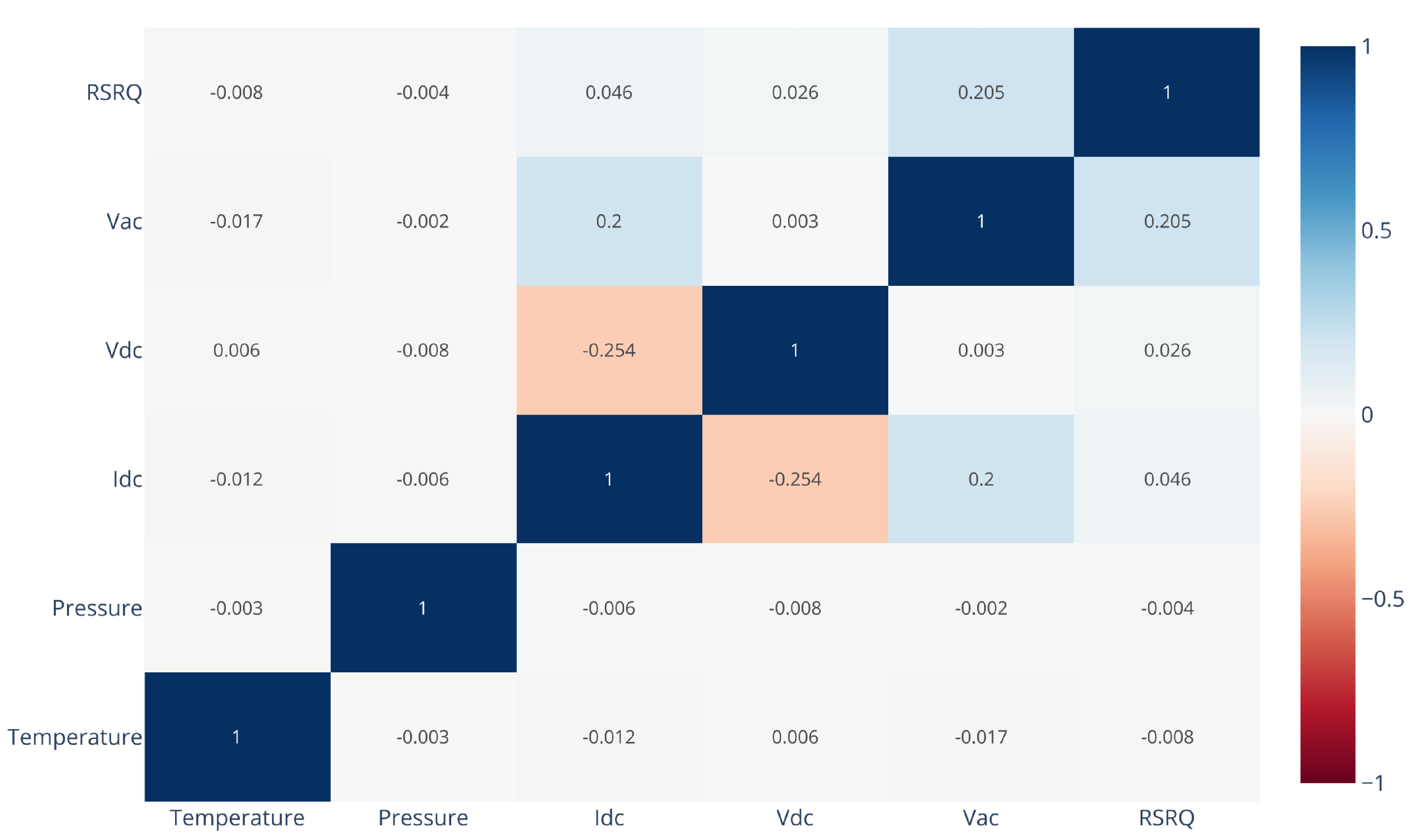
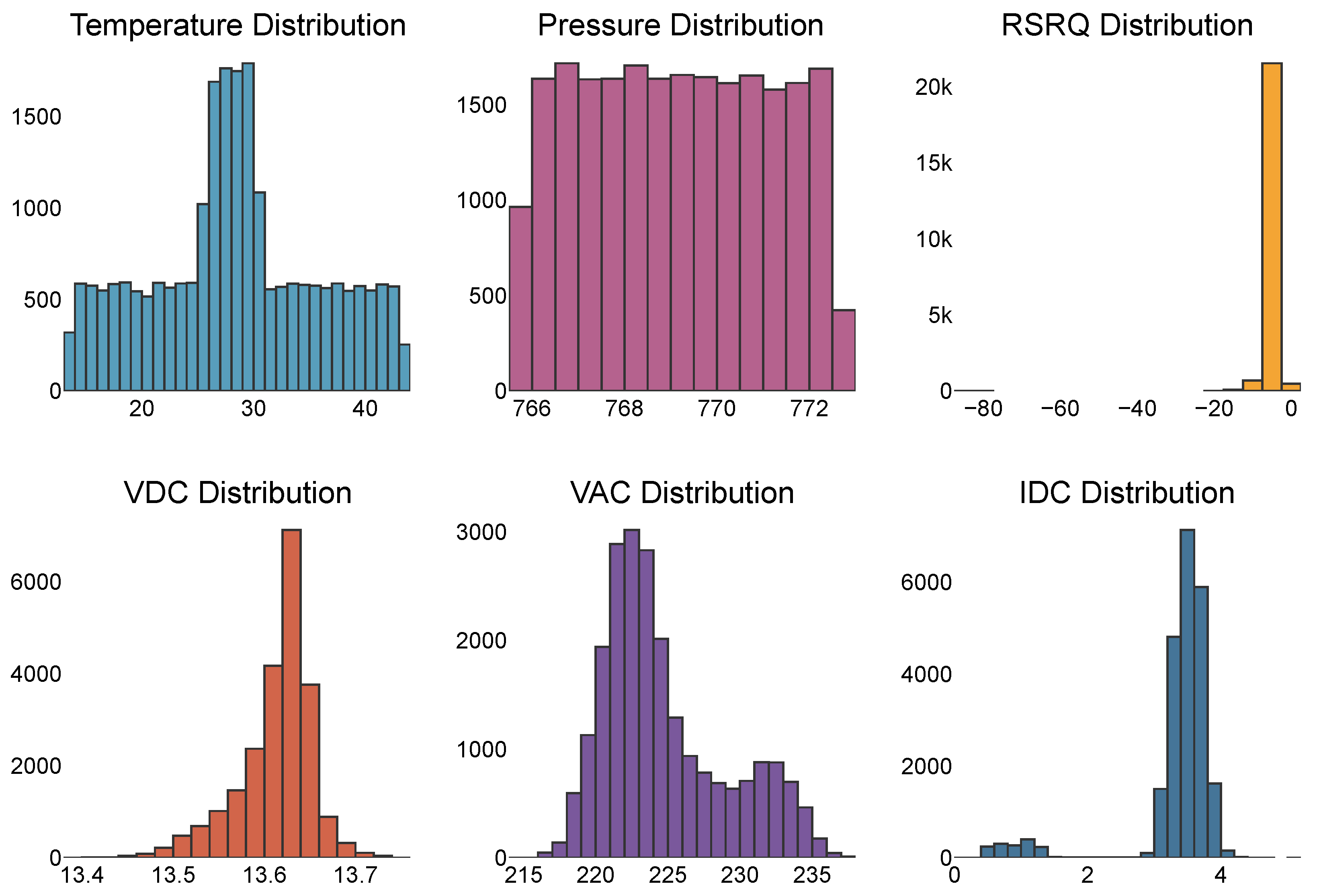
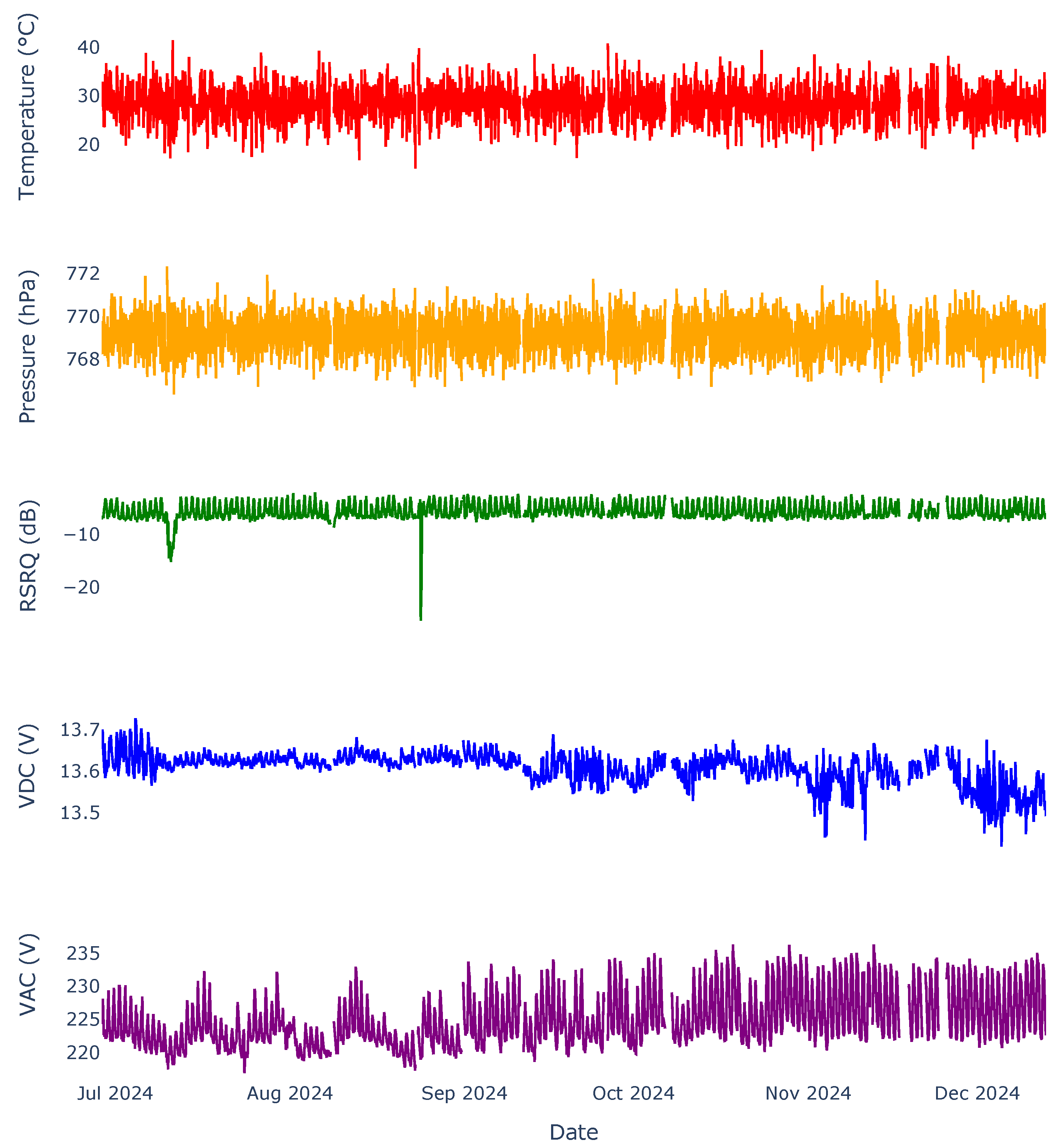
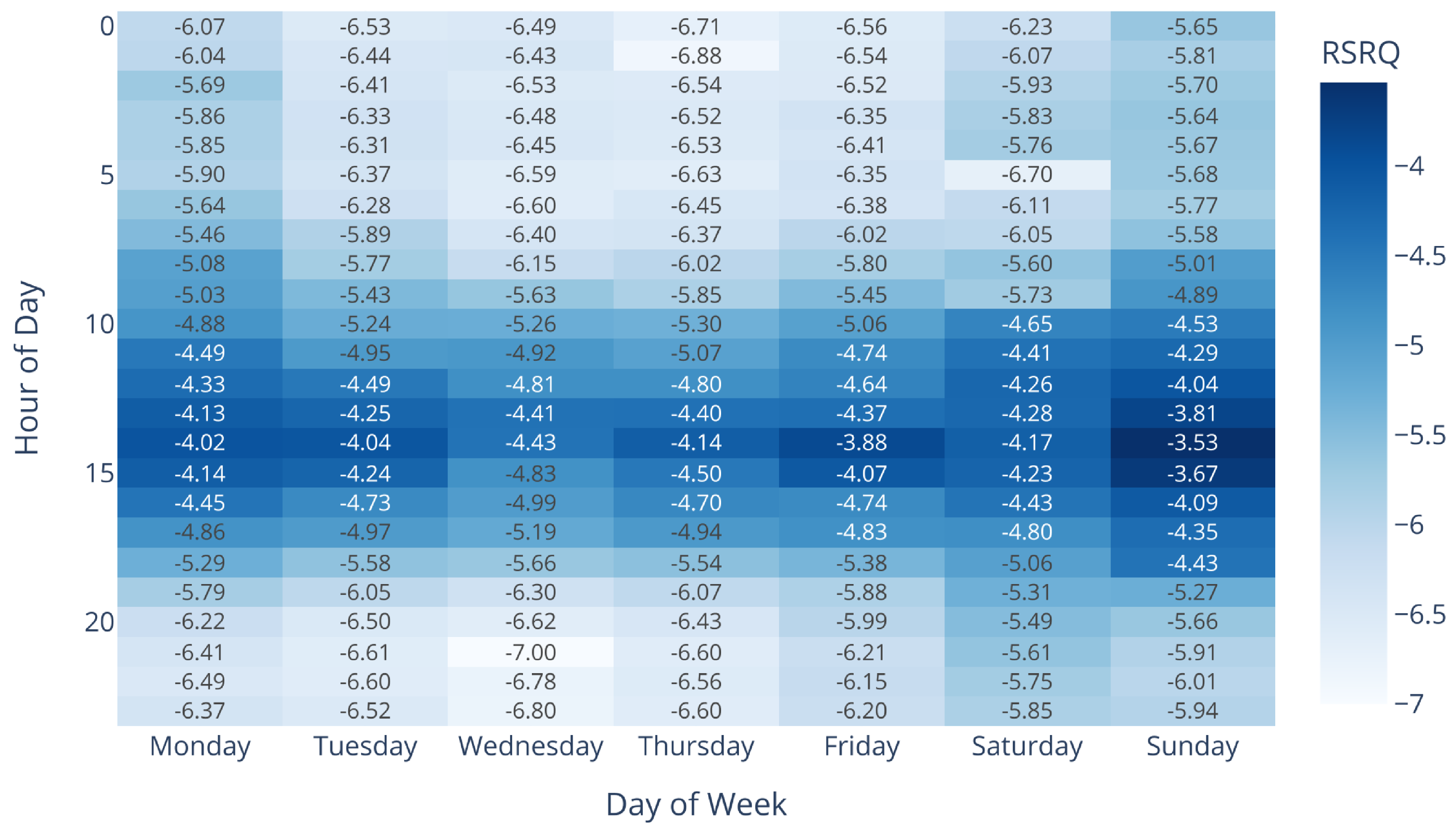

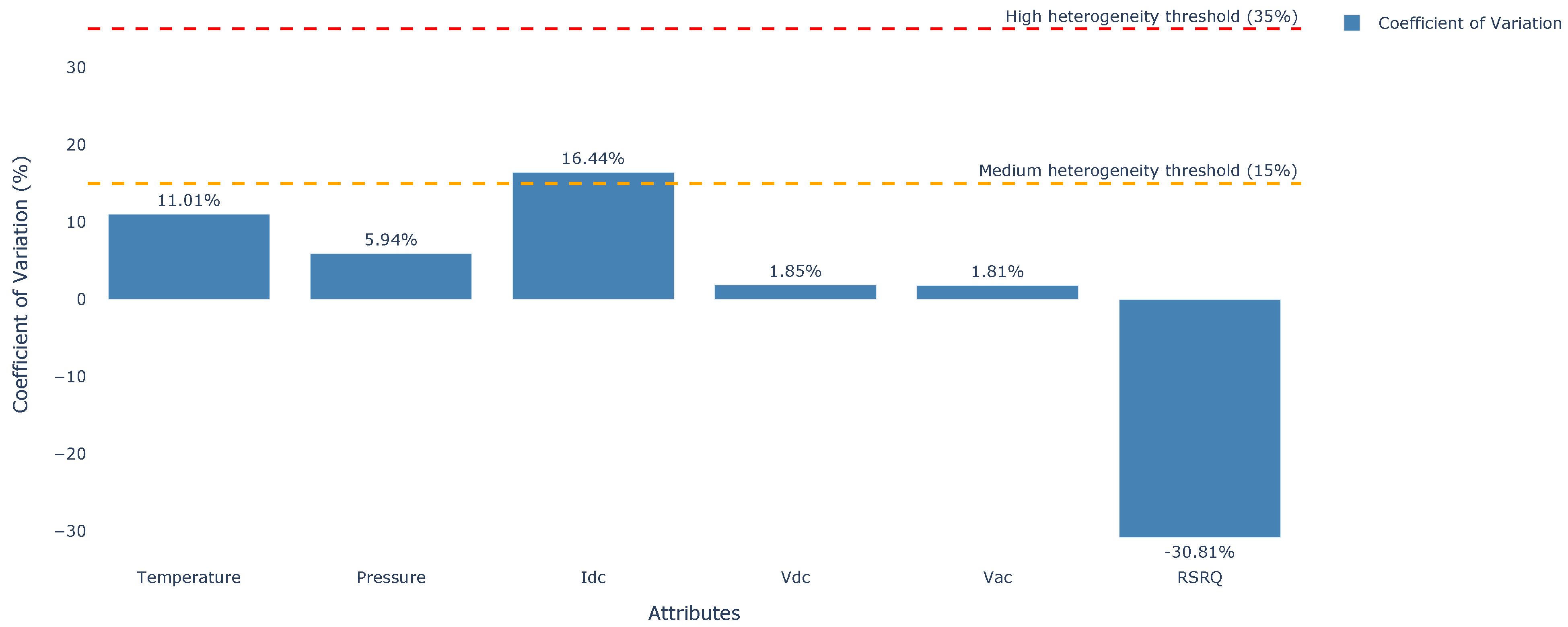
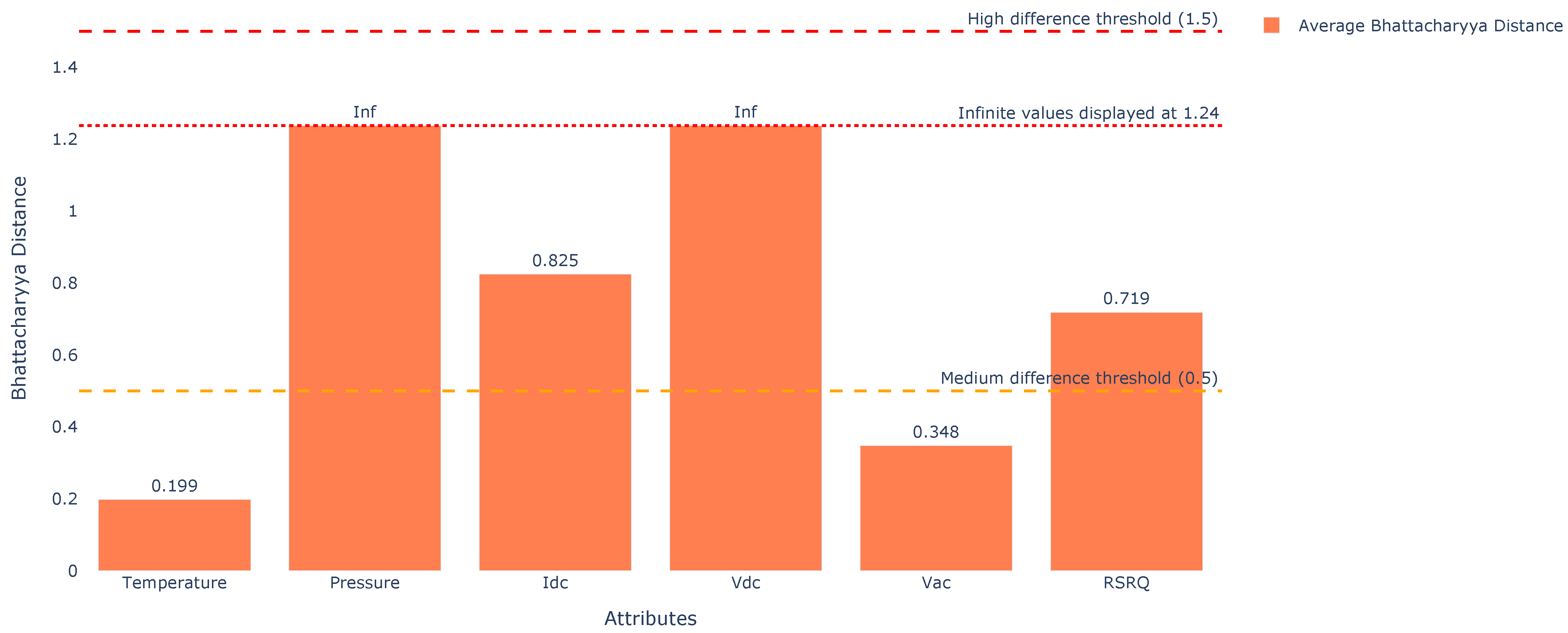

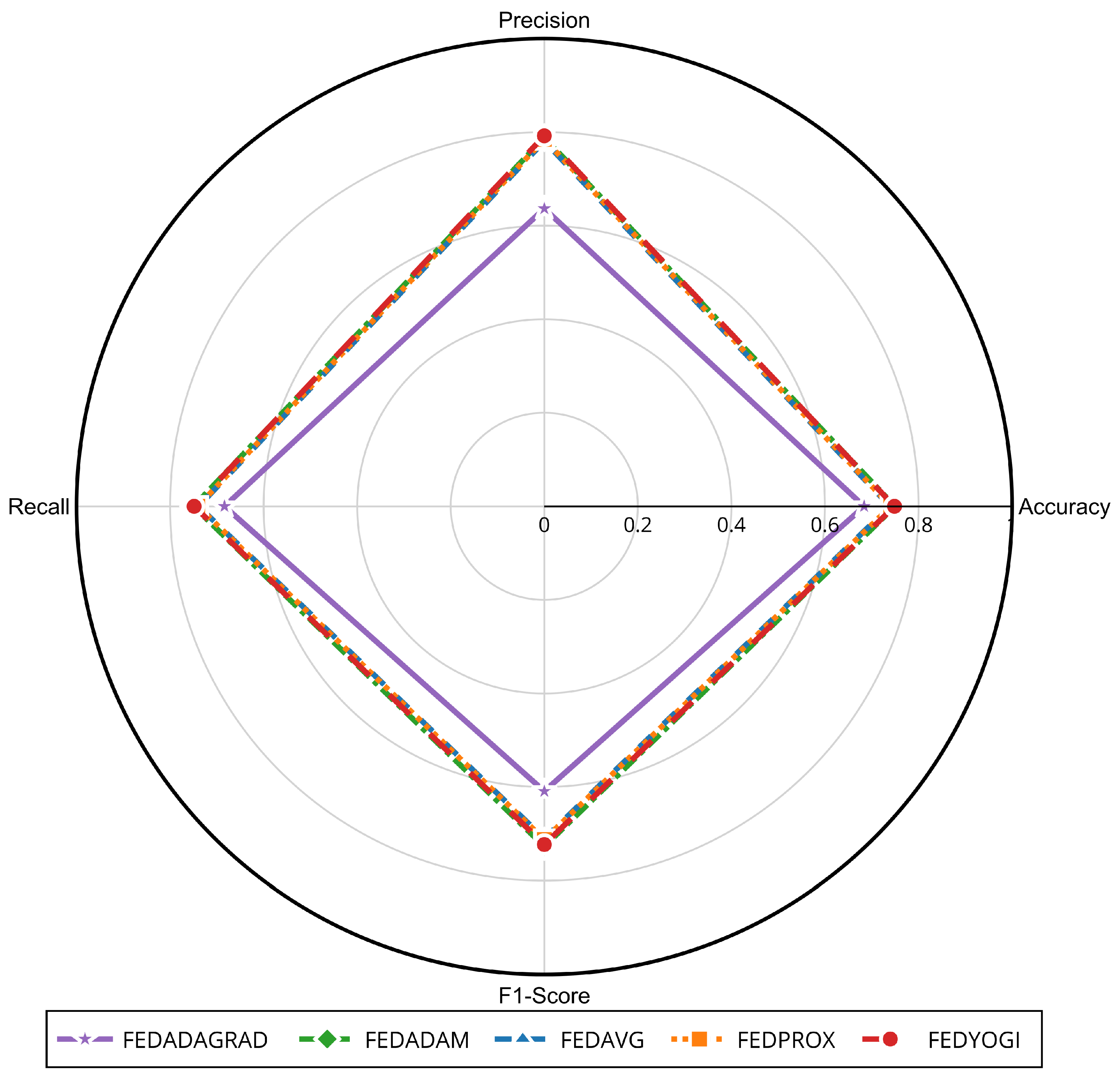
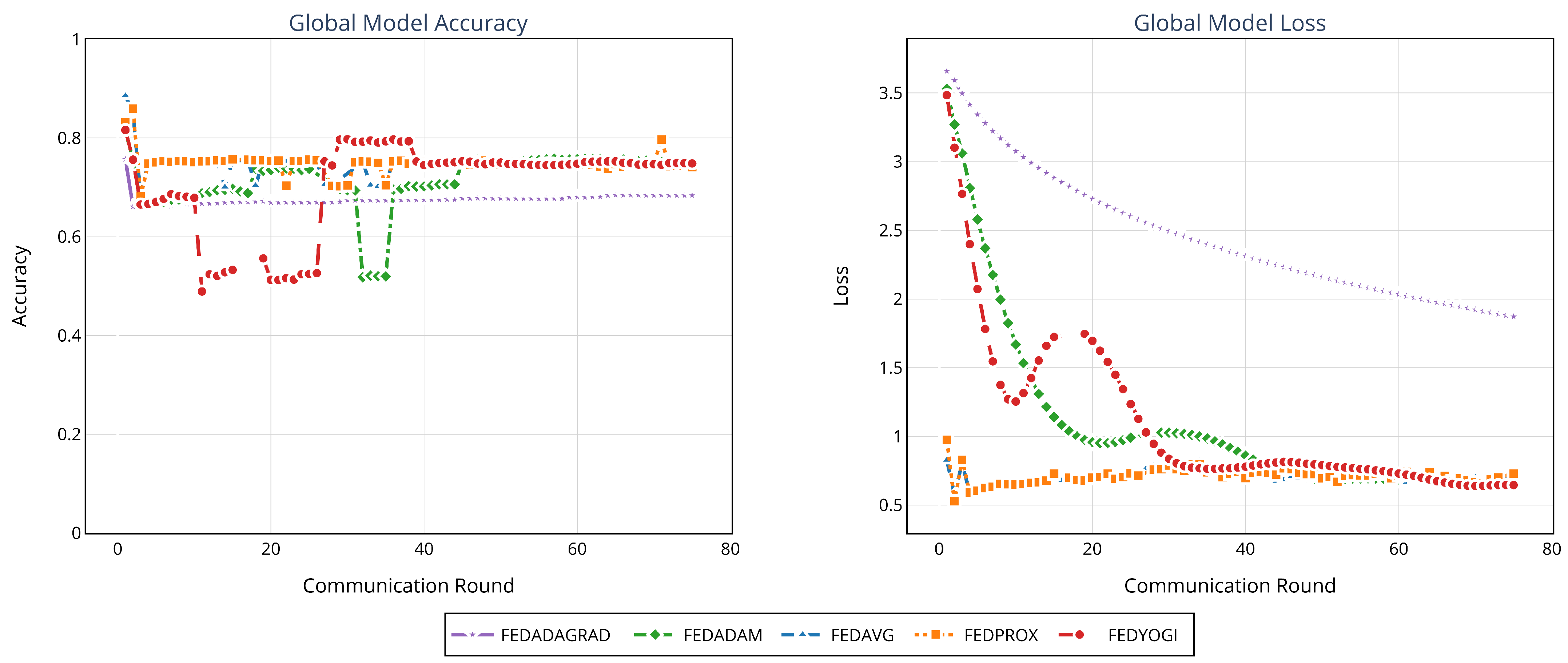
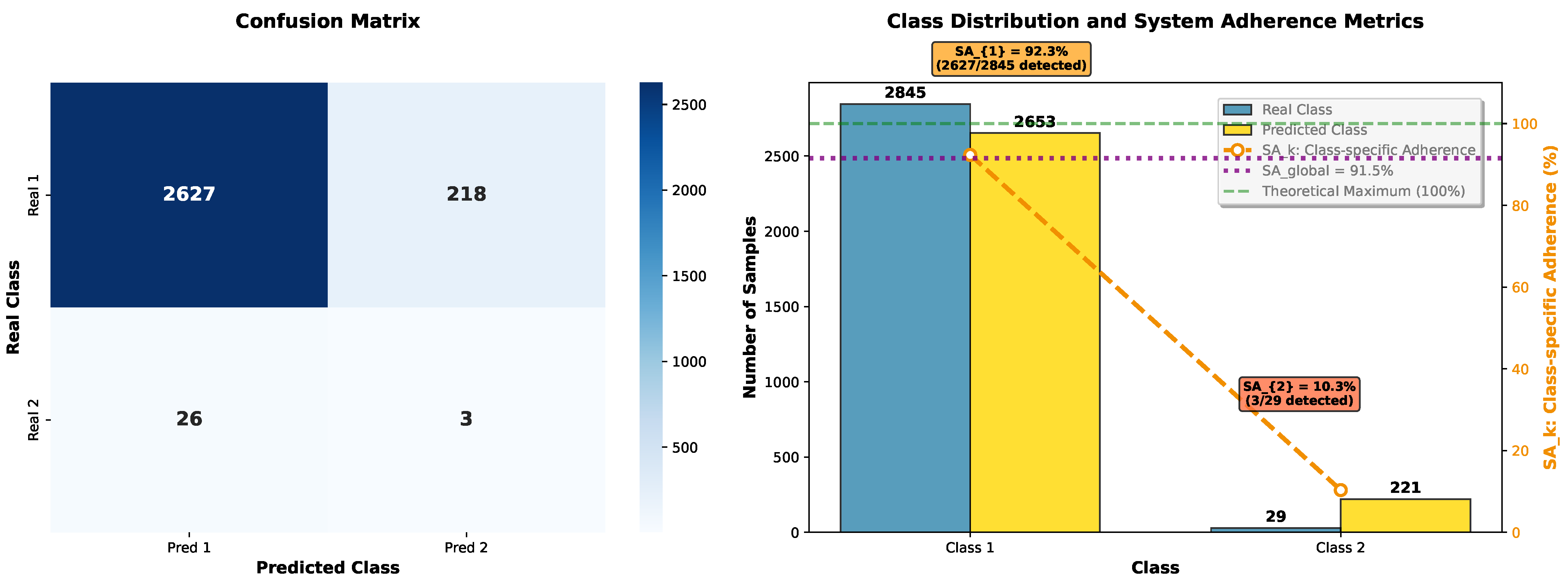
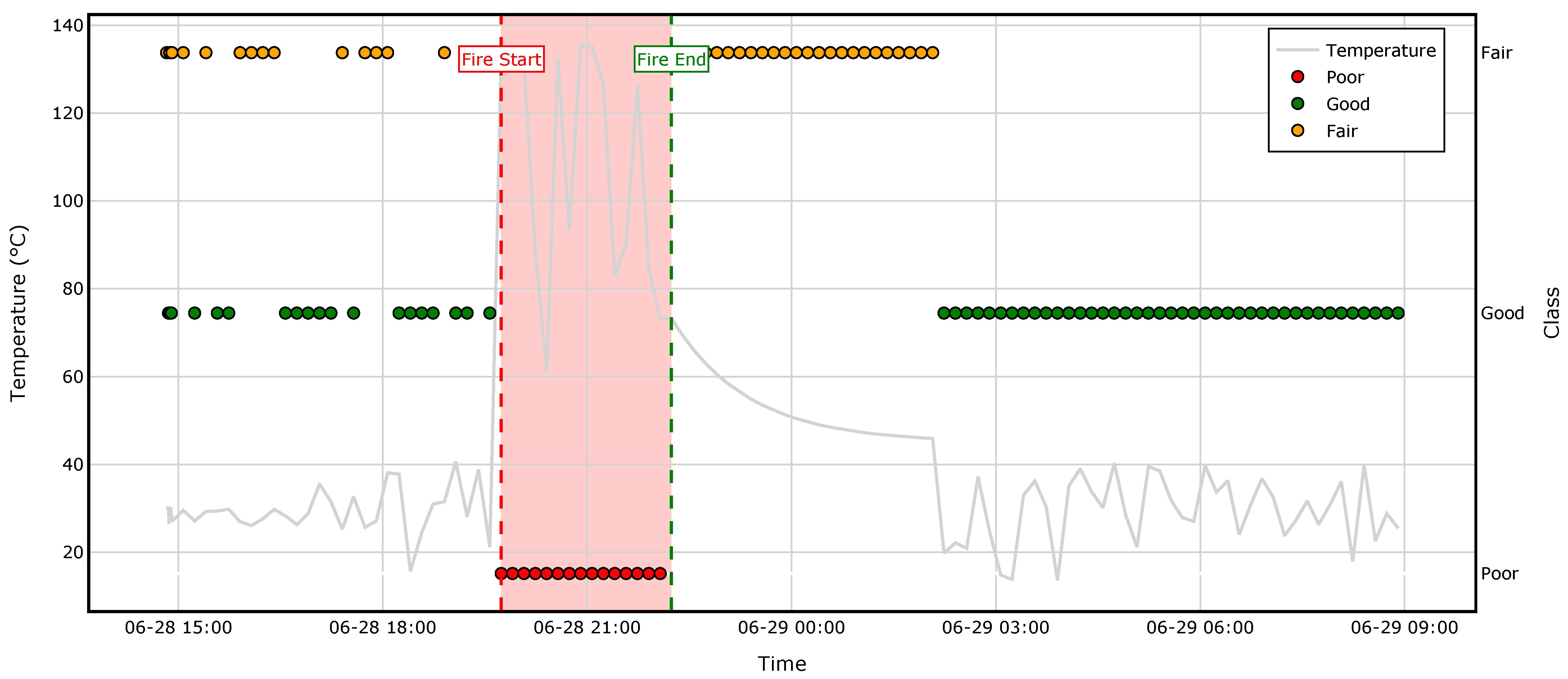
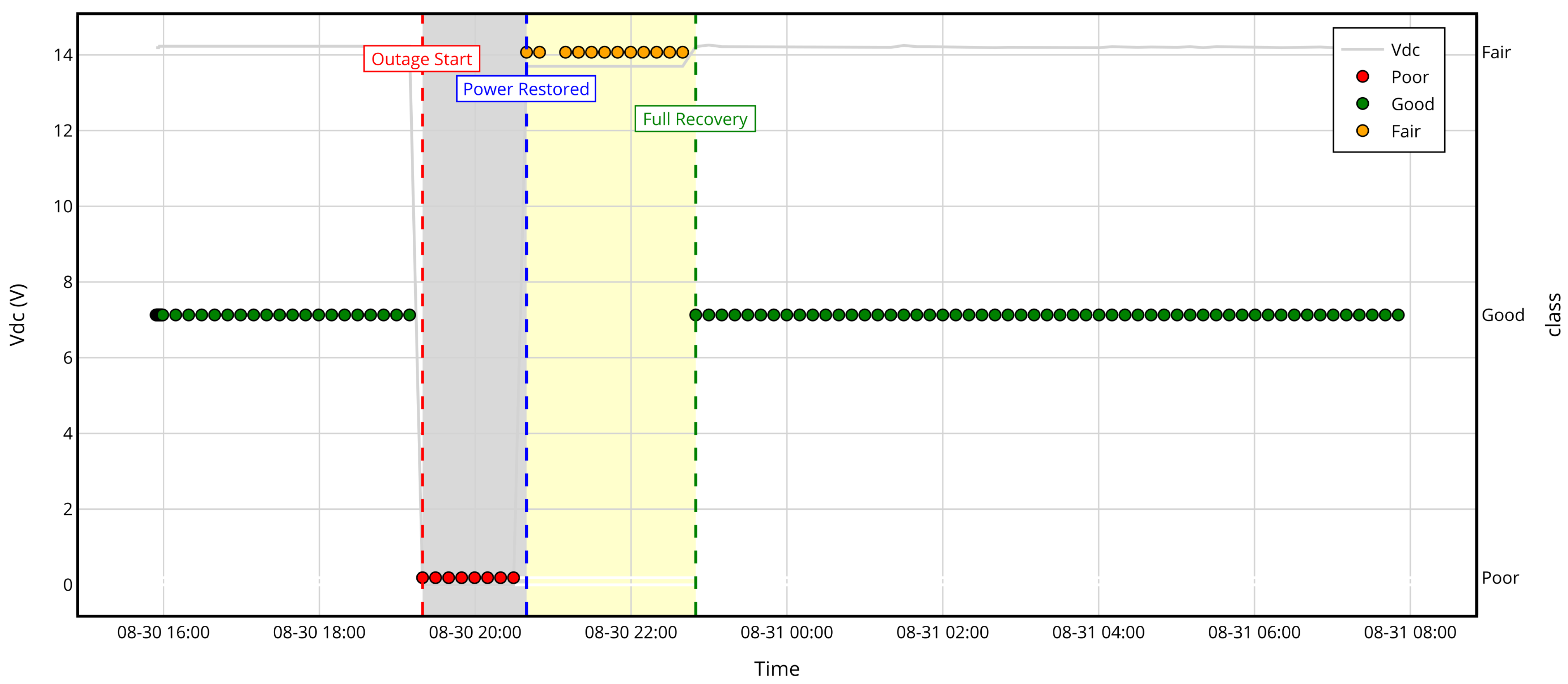
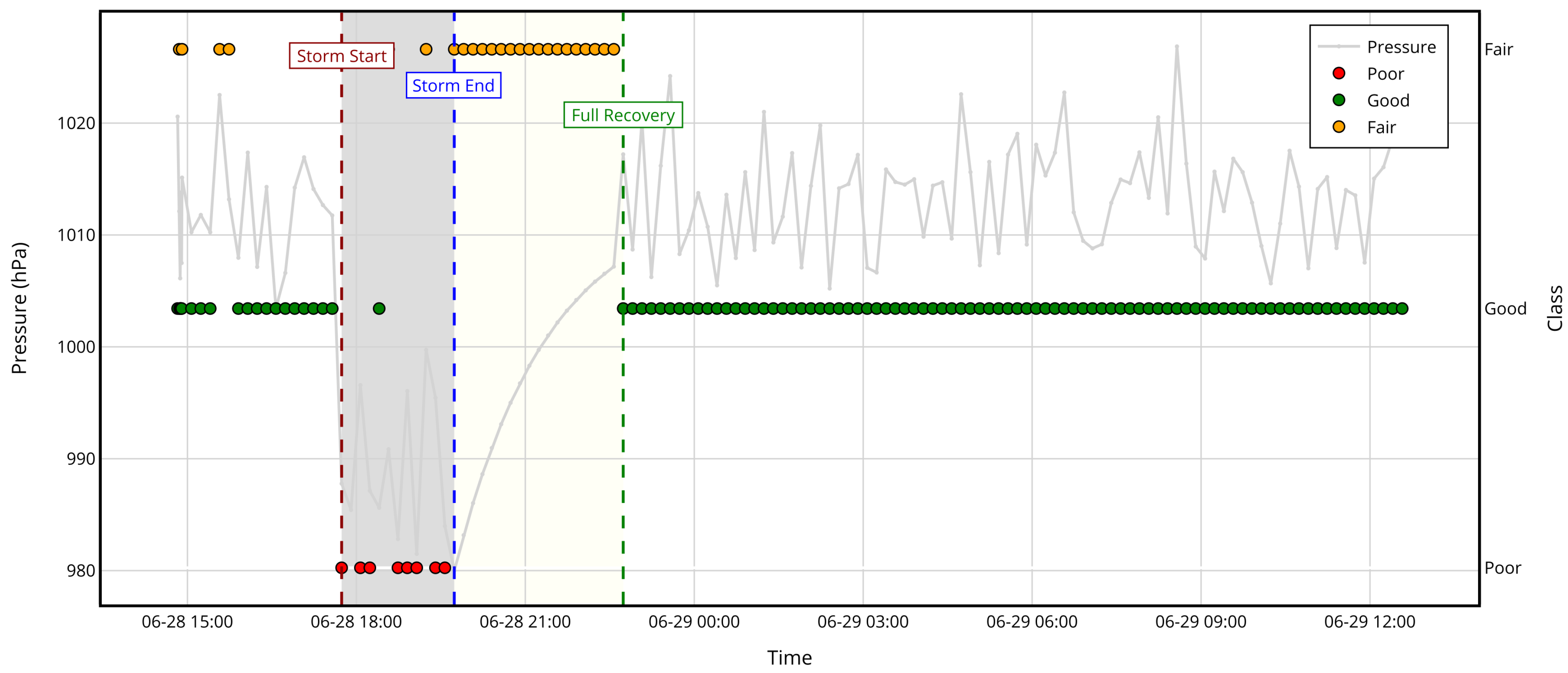
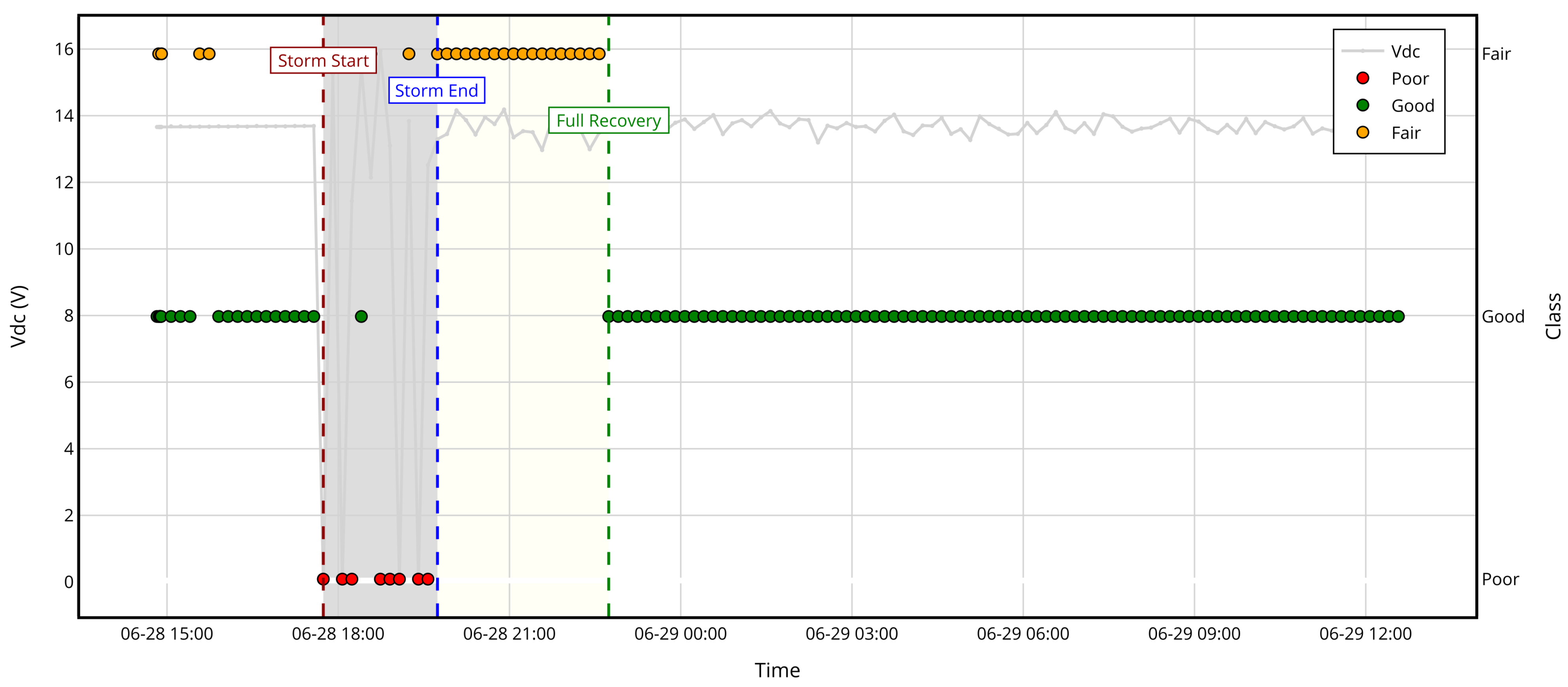
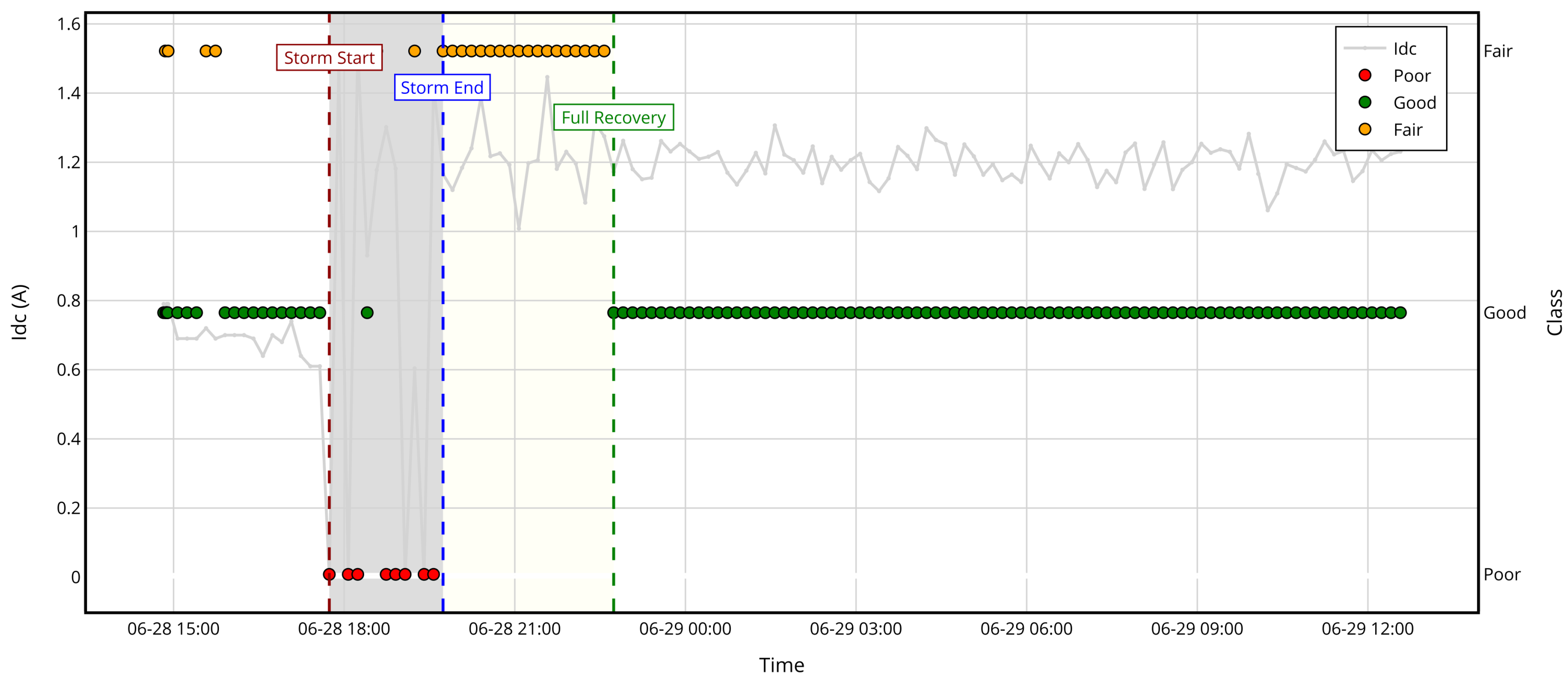
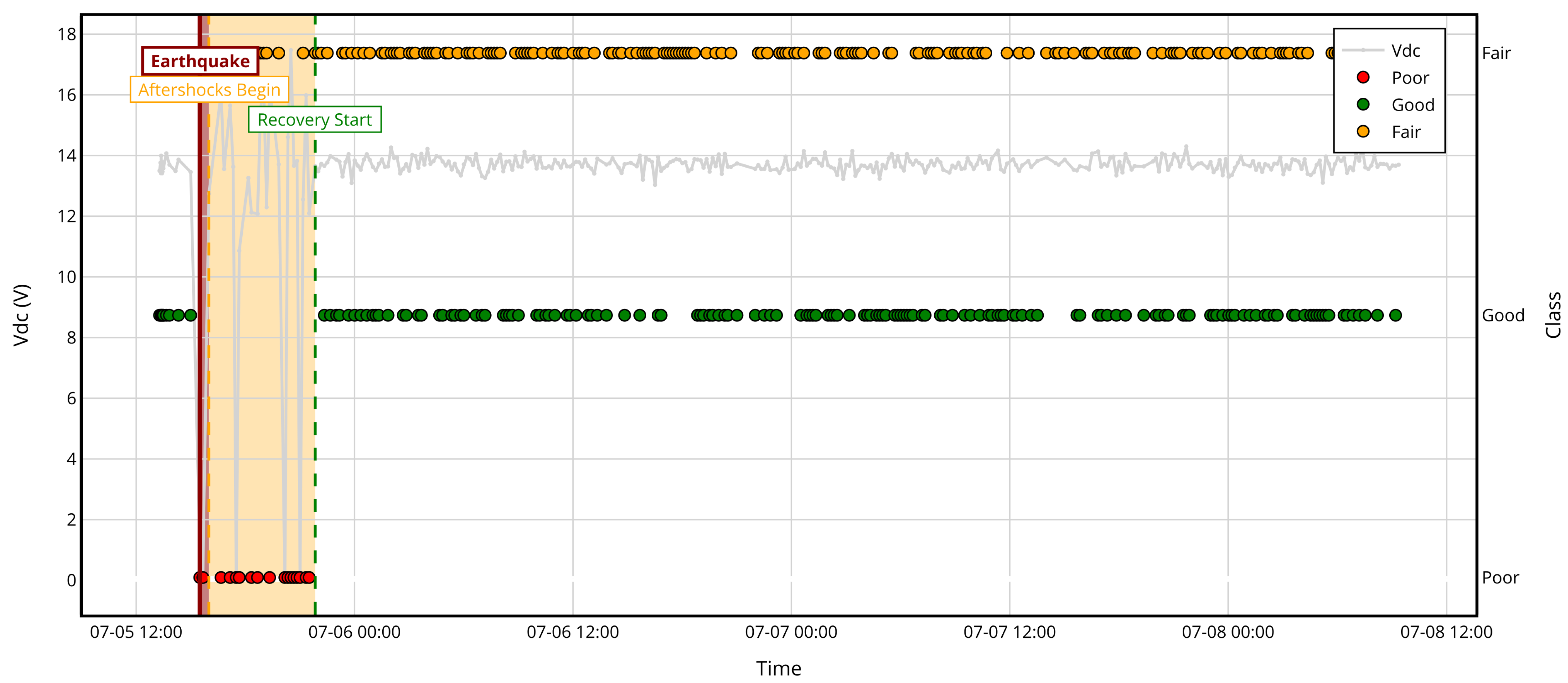
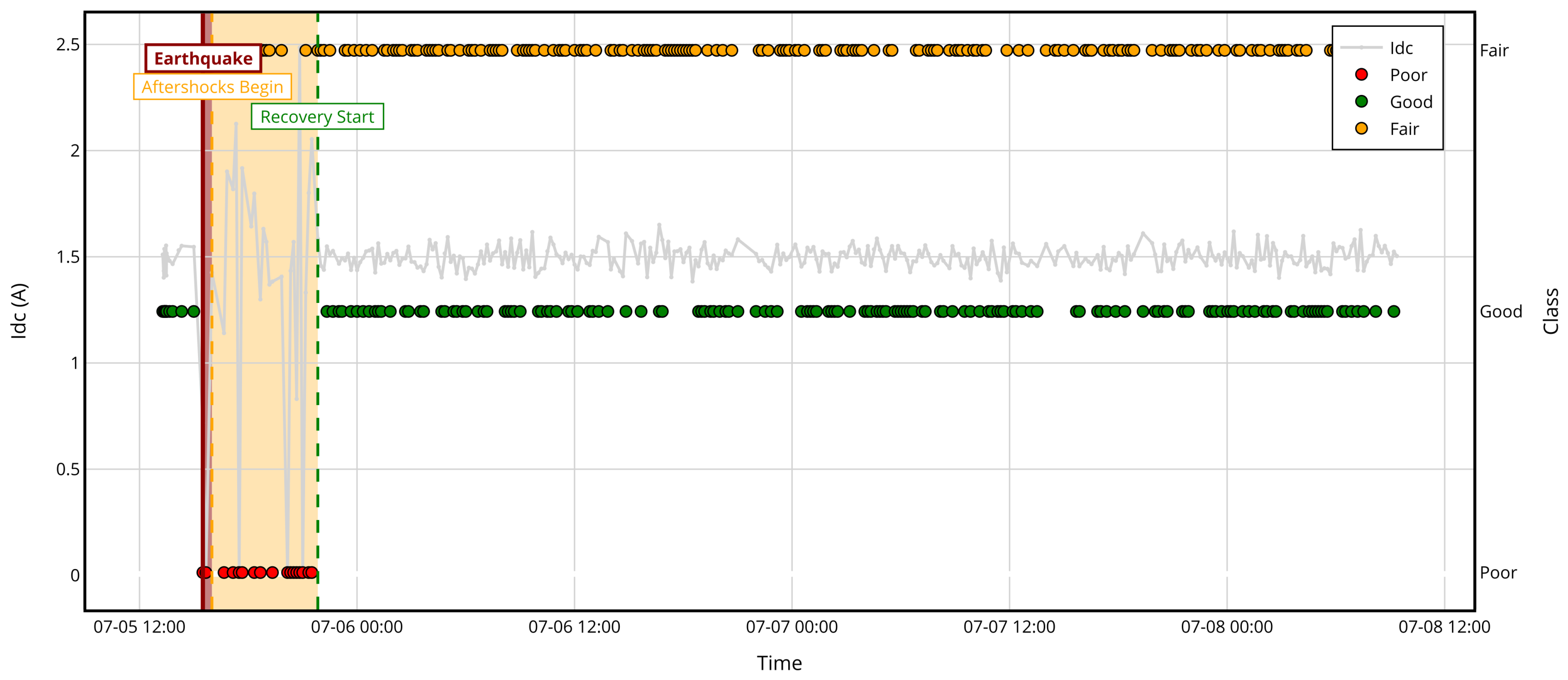
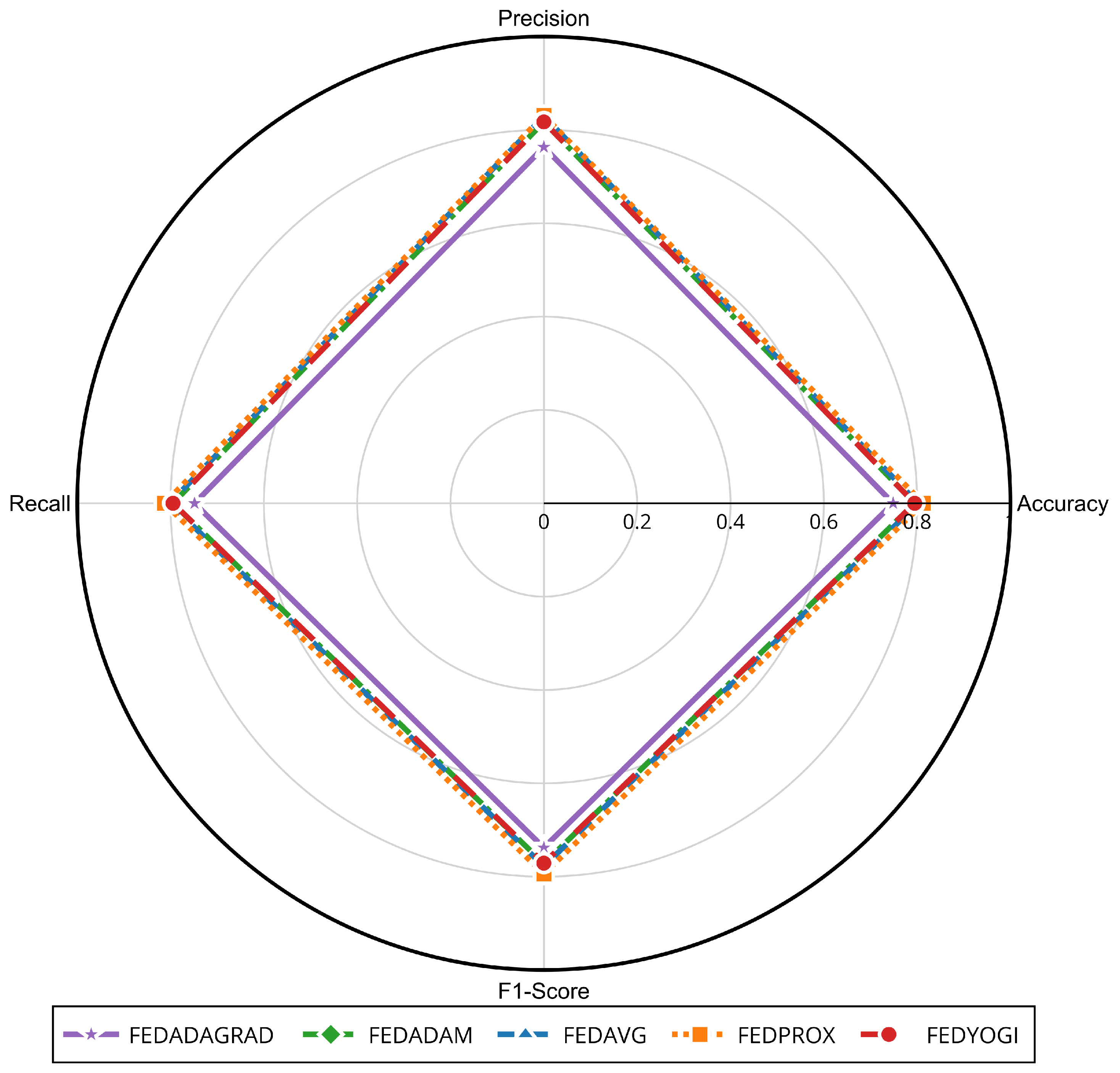
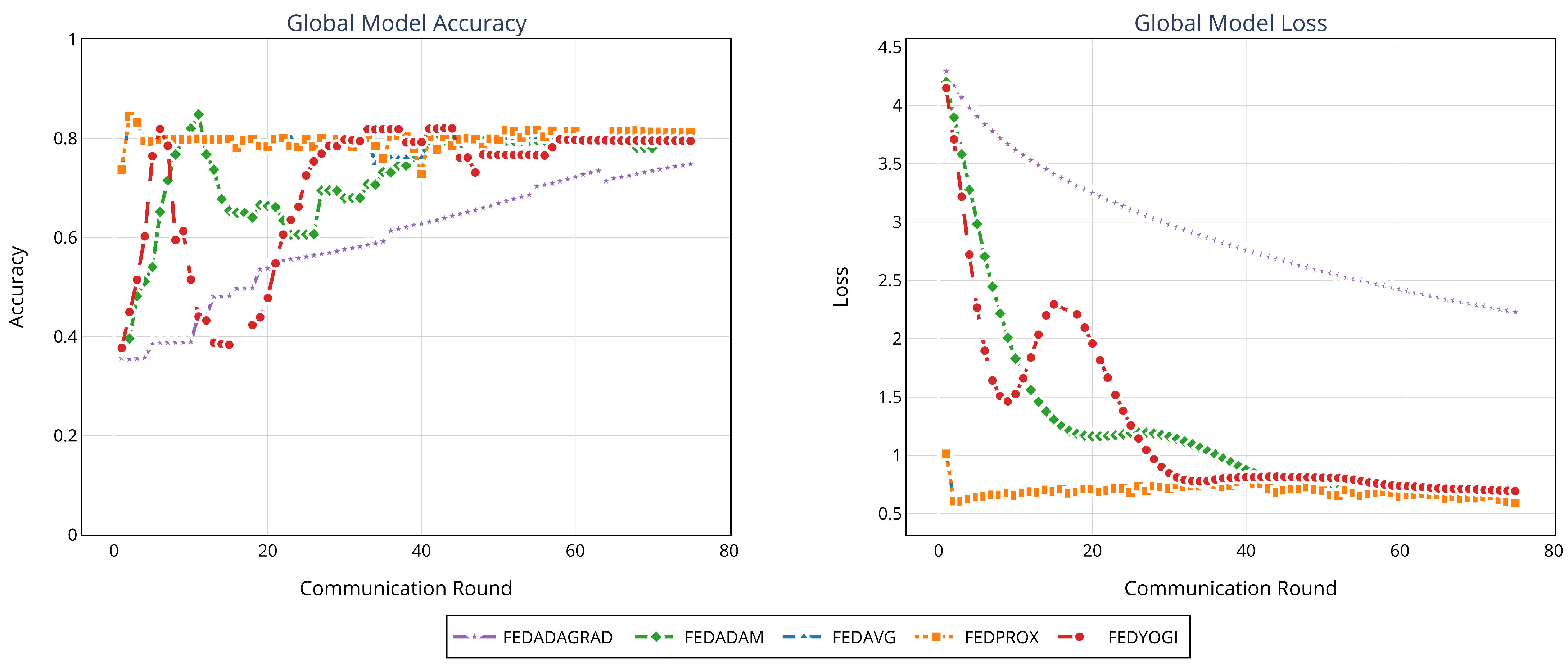
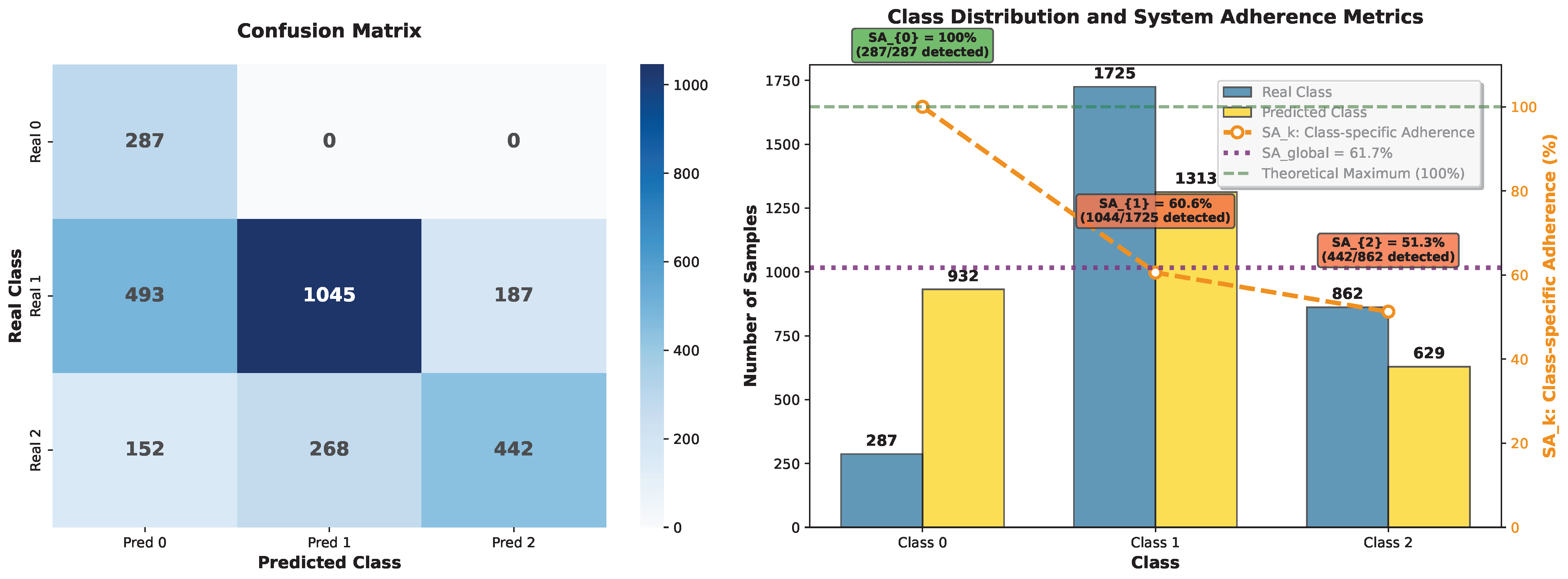
| Category Description | |
|---|---|
| Coverage and Throughput Prediction in Mobile Networks Using ML: | |
| Mobile coverage prediction using Extremely Randomized Trees Regressor (ERTR) to improve mobile networks [48]. | |
| Analysis of machine learning algorithms for 5G prediction, highlighting Random Forest and CNN [13]. | |
| Evaluation of ML algorithms for 4G prediction, highlighting Random Forest [49]. | |
| Terrestrial cellular networks can provide aerial coverage for BVLOS drone operations depending on distance and altitude [32]. | |
| Prediction of uplink data rate using ML, comparing algorithms for three locations and their accuracy [50]. | |
| Coverage and Throughput Prediction in Mobile Networks Using ML: | |
| Evaluated ML models for predicting signal strength in mobile networks, recommending the Tree Ensemble with Random Forest as the most practical for efficiently predicting RSRP [51]. | |
| Proposes a Machine Learning-based coverage estimation tool (MLOE) that uses Random Forest to improve mobile network planning, outperforming traditional techniques with an RMSE of 2.65 dB and R2 of 0.93 [52]. | |
| Prediction of signal quality and connection in LTE networks using ML in Quito, Ecuador [53]. | |
| ML Techniques for Prediction and Optimization of Mobile Networks: | |
| Prediction of RSSI using ML to improve connection and address localization and handover [54]. | |
| Used PCHIP to predict missing data in LTE measurements in dense urban environments, improving the radioelectric characterization of the terrain [55]. | |
| Private LTE/5G networks offer security indoors, but require optimization of coverage and latency, investigated through measurements in a building with sXGP [56]. | |
| Used drones and neural networks to measure and predict mobile signal strength, offering a safe alternative to drive-testing [57]. | |
| Clustering algorithm to improve demand forecasting in new LTE cells, reducing the prediction error from 133% to 35% [58]. | |
| LSTM with attention to predict performance in LTE networks, showing better results in normalized RMSE [59]. | |
| ML Applications in Communication Networks and Disaster Management: | |
| Enhanced grey prediction-based switching to address communication problems in high-speed railways, improving transitions between areas [60]. | |
| Machine learning models to predict link performance in LTE and 5G networks, achieving high predictive accuracy [61]. | |
| Uses machine learning techniques to predict congestion in LTE networks based on users [62]. | |
| RSSI prediction for underground wireless sensors using machine learning outperforms theoretical models for network optimization [63]. | |
| D-Net classification network that outperforms CNN and Transformer in efficiency and accuracy, applicable to disasters and other tasks [64]. | |
| Uses machine learning algorithms to identify and classify tweets about natural disasters, achieving high accuracy rates in text classification [65]. | |
| Communication Networks and Technology for Disaster Management: | |
| Post-disaster communication network based on LTE Device-to-Device ProSe and IoT to improve rescue operations [66]. | |
| Develops intelligent disaster prediction in networks using advanced techniques to improve disaster management [67]. | |
| Deep convolutional neural network detects and classifies natural disaster events with high accuracy to mitigate losses [68]. | |
| Advances and Applications of Federated Learning in Distributed Networks: | |
| Proposes a federated learning paradigm with active learning, demonstrating efficacy in reducing annotation and improving performance in applications [69]. | |
| Online learning offers global opportunities but presents distraction challenges addressed with private detection [4]. | |
| Proposes FL algorithms to improve performance on devices with limited energy and unbalanced data, considering social relationships [70]. | |
| Proposes a FedAvg-BE method to mitigate Non-IID data in FL, improving convergence in IoT [71]. | |
| Combines hybrid learning elements of centralized and federated learning to improve accuracy and optimize resources [3]. | |
| Latency optimization for blockchain FL in edge computing through offloading strategies, decentralized aggregation, and deep reinforcement learning to improve training efficiency [72]. | |
| Lightweight FL improves federated learning by reducing costs through lightweight networks, unstructured pruning, and optimal model selection [73]. | |
| FL emerges as a solution to enable AI in IoT networks, allowing distributed training without compromising privacy [74]. | |
| Presents TT-Fed, an FL algorithm for wireless networks that improves accuracy and reduces communication overhead versus traditional approaches [75]. | |
| Describes an alternative decentralized FL approach with blockchain that addresses confidentiality and fairness through a production-consumption model and APoS protocol [76]. | |
| Advances and Applications of Federated Learning in Distributed Networks: | |
| Analyzes optimization strategies with ML for rural wireless networks, highlighting FL and ANN algorithms, and identifying challenges to improve connectivity in remote areas [77]. | |
| Proposes an asynchronous FL design with periodic aggregation and scheduling based on channel quality and data representation to improve resource-limited systems [78]. | |
| Reviews meta-learning in natural language processing, presenting concepts and approaches to drive innovation in this field [79]. | |
| Over-the-air FL enables efficient model aggregation in wireless networks, addressing bottlenecks, but faces performance and security challenges requiring research [80]. | |
| Asynchronous FL is a distributed machine learning approach that addresses privacy and efficiency challenges in IoT [81]. | |
| FL allows training models without sharing local data, and proposes combining aggregation with permutations to improve training in domains with scarcity [82]. | |
| Proposes the Iterative Federated Clustering Algorithm (IFCA) to address FL in clustered users, alternating between estimating clusters and optimizing parameters [83]. | |
| Multimodal meta-learning is an emerging field that seeks to improve efficiency in complex tasks, addressing challenges such as few-shot learning [84]. | |
| On-device machine learning is optimized through federated distillation and augmentation, reducing overhead and improving Non-IID accuracy [85]. | |
| FL is a distributed learning paradigm that addresses heterogeneity through FedProx, a generalization of FedAvg that improves convergence [86]. | |
| NextG networks employ distributed FL in wireless networks to train a deep neural network for signal identification, improving accuracy and privacy [87]. | |
| Metrics | °C | hPa | IDC | VDC | VAC | RSRQ |
|---|---|---|---|---|---|---|
| Count | 22,800 | 22,800 | 22,800 | 22,800 | 22,800 | 22,800 |
| Mean | 28.34 | 769.15 | 3.34 | 13.61 | 224.79 | −5.55 |
| Std | 7.54 | 1.99 | 0.68 | 0.04 | 4.32 | 1.81 |
| Min | 13.50 | 765.70 | 0.14 | 13.39 | 214.98 | −85.00 |
| 25% | 23.48 | 767.41 | 3.33 | 13.59 | 221.66 | −7.00 |
| 50% | 28.17 | 769.13 | 3.50 | 13.62 | 223.54 | −6.00 |
| 75% | 33.47 | 770.87 | 3.64 | 13.63 | 227.34 | −4.00 |
| Max | 43.40 | 772.63 | 5.04 | 13.75 | 237.90 | −2.00 |
| Aspect | Accuracy/Recall | SA Metric |
|---|---|---|
| Primary Focus | Statistical performance | Operational reliability |
| Application Context | Model evaluation | Production decision-making |
| Interpretation | “How well does it work?” | “Can I trust it operationally?” |
| Threshold Setting | Technical optimization | Operational risk management |
| Decision Support | Model adjustments | Automation vs. supervision |
| FL Specificity | General purpose | Distributed system reliability |
| Operational Outcome | Performance improvement | Deployment confidence |
| Method | Aggregation Formula | Key Features | Advantages | Limitations | Optimal Scenario |
|---|---|---|---|---|---|
| FedAvg | where | Weighted average by data size. No adaptivity. | Simplicity, communication efficiency, low overhead | Severe degradation on non-IID data | IID data, limited resources, baseline [91] |
| FedProx | Local objective: Aggregation: same as FedAvg | Proximal regularizer term. Parameter controls proximity to the global model. | Robustness to statistical heterogeneity, stable convergence | Requires tuning of , 2x computational overhead | Moderate non-IID data, system heterogeneity [86] |
| FedAdam | First and second order adaptive moments. Typical values: , . | Fast convergence, adaptive to the geometry of the problem | Sensitive to hyperparameters, may oscillate during early training | Complex models, requires fast convergence [92] | |
| FedYogi | Sign operator for adaptive variance control. Greater stability than Adam. | Maximum robustness to outliers, more stable convergence | Implementation complexity, additional server memory | Very heterogeneous gradients, data with noise [92] | |
| FedAdagrad | Monotonic accumulation of squared gradients. No exponential decay. | Effective for sparse features, simple | Can over-penalize, learning rate decreases aggressively | sparse features, early training [92] |
| Method | Accuracy | Precision | Recall | F1-Score | Loss | Time (min) |
|---|---|---|---|---|---|---|
| FedAdam | 0.7498 | 0.7883 | 0.7498 | 0.7271 | 0.6533 | 2.3 |
| FedYogi | 0.7486 | 0.7922 | 0.7486 | 0.7229 | 0.6455 | 2.3 |
| FedProx | 0.7409 | 0.7846 | 0.7409 | 0.7124 | 0.7280 | 2.3 |
| FedAvg | 0.7389 | 0.7808 | 0.7389 | 0.7102 | 0.7048 | 2.5 |
| FedAdagrad | 0.6838 | 0.6365 | 0.6838 | 0.6089 | 1.8717 | 2.5 |
| Category | Metric | Value |
|---|---|---|
| System Adherence Metrics | ||
| Global System Adherence () | 91.51% | |
| Class-specific Adherence () | 92.34% | |
| Class-specific Adherence () | 10.34% | |
| Operational Reliability Assessment | ||
| Total samples evaluated | 2874 | |
| Perfect individual predictions () | 2630 (91.51%) | |
| Imperfect individual predictions () | 244 (8.49%) | |
| LTE Coverage Class Distribution Analysis | ||
| Class 1 (Good): Real samples | 2845 (98.99%) | |
| Class 1 (Good): Predicted samples | 2653 (92.31%) | |
| Class 1 (Good): Under-prediction factor | ||
| Class 2 (Fair): Real samples | 29 (1.01%) | |
| Class 2 (Fair): Predicted samples | 221 (7.69%) | |
| Class 2 (Fair): Over-prediction factor | ||
| LTE Coverage Class | (%) | Operational Decision Strategy |
|---|---|---|
| Class 1 (Good) | 92.34 | Production-ready deployment, 92.34% confidence-based automation, 7.66% require monitoring alerts, Efficient resource allocation. |
| Class 2 (Fair) | 10.34 | Critical enhancement required, Manual verification mandatory, 89.66% require secondary detection, Parallel coverage systems needed. |
| Class | Real Count | Predicted Count | Bias Factor | Operational Impact |
|---|---|---|---|---|
| Good (1) | 2845 | 2653 | 0.93× under | Optimistic approach; Less monitoring than necessary; Efficient processing allocation; Risk of missing edge cases. |
| Fair (2) | 29 | 221 | 7.62× over | Conservative approach; More alerts than necessary; Better coverage of threats; Higher operational costs. |
| Method | Accuracy | Precision | Recall | F1-Score | Loss | Time (min) |
|---|---|---|---|---|---|---|
| FedProx | 0.8131 | 0.8310 | 0.8131 | 0.7946 | 0.5918 | 3.2 |
| FedAvg | 0.8021 | 0.8295 | 0.8021 | 0.7777 | 0.7028 | 3.2 |
| FedAdam | 0.7951 | 0.8171 | 0.7951 | 0.7723 | 0.6857 | 3.2 |
| FedYogi | 0.7948 | 0.8172 | 0.7948 | 0.7711 | 0.6931 | 3.3 |
| FedAdagrad | 0.7487 | 0.7633 | 0.7487 | 0.7380 | 2.2296 | 3.2 |
| Category | Metric | Value |
|---|---|---|
| System Adherence Metrics | ||
| Global System Adherence () | 61.73% | |
| Class-specific Adherence () | 100.00% | |
| Class-specific Adherence () | 60.58% | |
| Class-specific Adherence () | 51.28% | |
| Operational Reliability Assessment | ||
| Total samples evaluated | 2874 | |
| Perfect individual predictions () | 1774 (61.73%) | |
| Imperfect individual predictions () | 1100 (38.27%) | |
| Coverage Class Distribution Analysis | ||
| Class 0 (Poor): Real samples | 287 (9.99%) | |
| Class 0 (Poor): Predicted samples | 932 (32.43%) | |
| Class 0 (Poor): Over-prediction factor | ||
| Class 1 (Good): Real samples | 1725 (60.02%) | |
| Class 1 (Good): Predicted samples | 1313 (45.69%) | |
| Class 1 (Good): Under-prediction factor | ||
| Class 2 (Fair): Real samples | 862 (29.99%) | |
| Class 2 (Fair): Predicted samples | 629 (21.89%) | |
| Class 2 (Fair): Under-prediction factor | ||
| LTE Coverage | (%) | Operational Decision Strategy |
|---|---|---|
| Class 0 (Poor) | 100.0 | Full automation enabled, All critical alerts automated, Zero tolerance for missed detections, Immediate response protocols. |
| Class 1 (Good) | 60.58 | Graduated automation strategy, 60.58% confidence-based automation, 39.42% require human oversight, Selective deployment thresholds. |
| Class 2 (Fair) | 51.28 | Human-supervised operation, 51.28% automated suggestions only, 48.72% mandatory manual verification, Conservative deployment approach. |
| Class | Real Count | Predicted Count | Bias Factor | Operational Impact |
|---|---|---|---|---|
| Poor (0) | 287 | 932 | 3.25× over | Conservative approach, More alerts than necessary, Better coverage of critical areas, Higher maintenance costs. |
| Good (1) | 1725 | 1313 | 0.76× under | Optimistic bias, May miss some good areas, Efficient resource allocation, Risk of service degradation. |
| Fair (2) | 862 | 629 | 0.73× under | Under-detection tendency, Potential QoS issues, Requires proactive monitoring, Manual intervention needed. |
Disclaimer/Publisher’s Note: The statements, opinions and data contained in all publications are solely those of the individual author(s) and contributor(s) and not of MDPI and/or the editor(s). MDPI and/or the editor(s) disclaim responsibility for any injury to people or property resulting from any ideas, methods, instructions or products referred to in the content. |
© 2025 by the authors. Licensee MDPI, Basel, Switzerland. This article is an open access article distributed under the terms and conditions of the Creative Commons Attribution (CC BY) license (https://creativecommons.org/licenses/by/4.0/).
Share and Cite
Acuña-Avila, A.; Fernández-Campusano, C.; Kaschel, H.; Carrasco, R. FedResilience: A Federated Classification System to Ensure Critical LTE Communications During Natural Disasters. Systems 2025, 13, 866. https://doi.org/10.3390/systems13100866
Acuña-Avila A, Fernández-Campusano C, Kaschel H, Carrasco R. FedResilience: A Federated Classification System to Ensure Critical LTE Communications During Natural Disasters. Systems. 2025; 13(10):866. https://doi.org/10.3390/systems13100866
Chicago/Turabian StyleAcuña-Avila, Alvaro, Christian Fernández-Campusano, Héctor Kaschel, and Raúl Carrasco. 2025. "FedResilience: A Federated Classification System to Ensure Critical LTE Communications During Natural Disasters" Systems 13, no. 10: 866. https://doi.org/10.3390/systems13100866
APA StyleAcuña-Avila, A., Fernández-Campusano, C., Kaschel, H., & Carrasco, R. (2025). FedResilience: A Federated Classification System to Ensure Critical LTE Communications During Natural Disasters. Systems, 13(10), 866. https://doi.org/10.3390/systems13100866











